An Alien Race Just Returned To Star Trek For The First Time In Nearly 40 Years
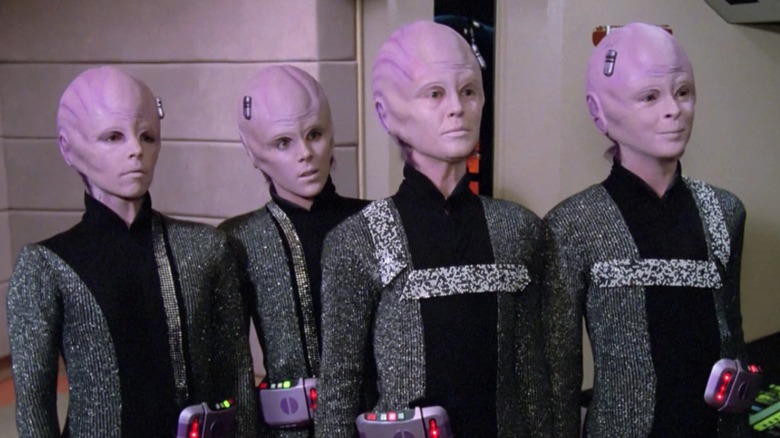
Spoilers for "Star Trek: Lower Decks" follow .
Season 4 of "Star Trek: Lower Decks" has featured a mysterious ship destroying ships belonging to every alien race in the Alpha Quadrant, from Klingons to Romulans — or has it? The latest episode, "A Few Badgeys More," revealed the ships are actually being disabled and towed away ( while also clearing our suspect list ). However, the episode's cold opening gave us yet another scene of a ship ambush. This one belonged to an alien race we haven't seen in "Star Trek" since "The Next Generation" — the Bynars.
They're a demure, purple-skinned, and genderless race. Their name is also a reference to "binary code." The Bynars operate in pairs, finishing each others' sentences when they speak English. Their preferred mode of communication, though, is an unintelligible (to human ears) high-pitched cooing that sounds like words being filtered through a fast-forward button.
Why do the Bynars function this way? Technology, of course. The Bynars use neuro-computers (their parietal lobe is replaced with a processor shortly after birth) to process information at lightning-fast speeds while carrying "buffers" (think an external hard drive) to store that information. As a sign of their cyborg augmentation, small chips visibly protrude from the side of their hairless heads.
A quartet of Bynars are the antagonists of a "Next Generation" season 1 episode, "11001001." They're brought on board the Enterprise to upgrade the ship's computers, but turn around and hijack it. It turns out that a star recently went supernova near their homeworld, Bynaus. The Bynars' complete dependence on computers means that the resulting electromagnetic pulse (EMP) would be an extinction-level event for them. They wanted to use the Enterprise only to back up their planet's main computer and would've relinquished it once their crisis was over. The irony, of course, is that if the Bynars had asked for help, Captain Picard (Patrick Stewart) would've granted it.
The Bynars ultimately turned out to be a one-off alien race; they never showed up again on "TNG" and "11001001" (aired in 1987) was their last appearance before "A Few Badgeys More." However, "11001001" co-writer Maurice Hurley would go on to pen "Q Who" in season 2. That episode introduced a much more famous "Star Trek" race: the Borg . Were the Bynars on Hurley's mind when he wrote that episode? The Borg share a similar hive mind and cybernetic enhancements but to much more sinister ends than the Bynars. Indeed, in "Star Trek: Enterprise" episode "Regeneration," Dr. Phlox (John Billingsley) compares the Bynar to the Borg.
In the context of "The Next Generation," the Bynars were an early experiment that didn't quite pan out ( see also: the Ferengi) . However, on "Lower Decks," there's no corner of "Star Trek" history too obscure to acknowledge.
"Star Trek: Lower Decks" is streaming on Paramount+.
- What’s The Viewscreen?
- Donation Success!
- Star Trek: The Animated Series Re-Watch Index
- Star Trek Movies I-VI Re-Watch Index
- Related Posts Index
- The Re-Watches
- Ten Forward
- Star Trek: The Next Generation Re-Watch Index
- Privacy Policy
- Star Trek Re-Watch Index
- Laugh Treks

Star Trek: The Next Generation Re-Watch: “11001001”
Season 1, Episode 15 Original air date: February 1, 1988 Star date: 41365.9
Mission summary
Enterprise reports to Starbase 74 for its 30,000 light year service inspection and upgrades, to be performed by Bynars, aliens who work in linked pairs and are connected to a central computer on their homeworld. Commander Riker doesn’t completely trust them, but he’s content to leave Wesley to keep an eye on them after the alien computer whizzes modify the holodeck and program up his dream girl: a woman named Minuet who tells him exactly what he wants to hear.
Picard is not immune to the unexpected charms of Riker’s sophisticated, artificially-intelligent holodate. He hangs out with them in a recreation of a New Orleans jazz club while Data copes with a rather urgent emergency: The computer reports that the antimatter containment field is failing. Unable to contact either of his superiors, he orders a full evacuation and sets the ship’s autopilot to send Enterprise a safe distance from the starbase and any inhabited planets in case it goes kablooey.
Once the ship is clear of spacedock, the magnetic containment field miraculously regenerates and Enterprise sets course for Bynaus, the Bynars’ homeworld. They were played! When Picard finally leaves Riker and Minuet to do whatever a man and a computer-generated woman do together, they discover the ship is on red alert and has been abandoned. Prepared to destroy the ship to keep it out of enemy hands, they return to the Bridge, where they discover their hijackers are unconscious and dying. Minuet confirms Picard and Riker’s suspicion that the Bynars stole Enterprise —for all intents and purposes a mobile computer—and used it as temporary backup storage for their planet’s data, to protect it from a power surge from a nearby supernova. But while the system is down for unscheduled maintenance, the Bynars are on the brink of death.
With the danger past, Picard and Riker work together to find the correct ZIP file in time and restore the computer on Bynaus. They return Enterprise to the starbase, where the Bynars will face legal action for stealing the starship. Riker hurries back to the holodeck to continue the best night of his life, but Minuet is gone.
RIKER: She’s gone. I tried variations of the program, others appeared, but not Minuet. PICARD: Maybe it was all part of the Bynar’s programming. But you know, Number One, some relationships just can’t work. RIKER: Yes, probably true. She’ll be difficult to forget.
This episode is at turns fascinating and disturbing. Setting aside the uncomfortable implications of Riker’s infatuation with Minuet for a moment, I’ll say that I’ve always liked this episode, and that hasn’t changed. The Bynars are some of the more intriguing aliens we’ve seen in Star Trek thus far , especially in TNG, however simplistic their development might be. It’s particularly interesting to re-watch “11001001” in 2012, versus 1988 when it was first broadcast, or even 1991, when I probably saw it for the first time.
While a Star Trek episode like “The Ultimate Computer” cautioned against advancing too far and relying on machines too much, this TNG episode illustrates a symbiosis between organic beings and technology and avoids being too judgmental about it. Riker displays some uncertainty and suspicion over their work, but not without good reason. Despite the obvious—perhaps too obvious—flaws in having a central computer running your planet, intricately linked to everyone who lives there, there’s no moralizing or criticism of the way these lifeforms have evolved. Even the Bynars are quick to point out there are some drawbacks.
Considering the incredible usefulness of an advanced computer like the one aboard Enterprise , and the fact that one of its crew is an android, TNG is much more progressive and accepting of technology than its predecessor. Looking back at it today, the connection between the Bynars and their own version of “cloud” computing is eerily prescient. Our ubiquitous smartphones are not much smaller than the communication boxes they wear, and even our language is adapting and becoming a kind of shorthand, largely thanks to text messages and Twitter. The internet is already a kind of hive mind, and we will only rely on it more as time goes on and we become even more connected than we are now.
Although this is essentially another “aliens take over the ship” episode, their plan is cleverer than most and doesn’t rely on the crew being too stupid for a change. The actors really seem to be settling comfortably into their rules at last, with a better idea of who their characters are. There’s also a nice cinematic quality, thanks to using stock footage shot for the cinema, repurposed as Starbase 74.
However, it might have been more engaging and believable to see the “natural” Bynars surface when their computer is offline, perhaps making them miserable and less intelligent, instead of killing them. I mean, I get pretty cranky when I can’t get a good Wi-Fi connection or my phone freezes. And while I liked seeing the overall competence of the crew—from Data’s quick, practical command decisions to Picard and Riker’s thoughtful attempts to regain control of the ship and discover what was going on—this time I was aware of a glaring flaw: The Bynars seemingly crafted their puzzle for Riker to solve, but required the synchronized actions of two people to unlock it. Minuet points out that they didn’t know Picard would be caught on the holodeck too, though one could argue that they adapted their plan to account for him as soon as they realized it was a two-for-one special.
The biggest issue is the squick factor of Riker basically falling in love with a computer program, which won’t be the last time this happens to a lonely guy on the ship. I can understand both why he might fall for the Bynars’ unusual program and why people would be disturbed by it, but overall the delicate matter was handled rather well. I was surprised, but liked the fact that Picard took Riker’s compromising situation all in stride. (Though I still object to people waltzing into other people’s programs whenever they feel like it.) It was also gratifying to see the difference between the captain and Riker. Picard views Minuet as an oddity, a marvelous piece of technology, while Riker is clearly more interested in her as a nice piece of ASCII—a more intimate diversion than an intellectual one. Like a horny teenage boy, he wants to find out just how far he can get with her.
I’m all too happy to overlook that creepiness though, because the rest of the episode was fun and engaging. Riker did ask the right questions about Minuet and their chances at any semblance of a real relationship at least, and as I pointed out to my wife when we watched this, I can’t blame him for choosing a computer program over Troi. Her response: “There’s a difference between Troi and a computer program?” Zing!
Eugene’s Rating: Warp 4 (on a scale of 1-6)
Best Line: RIKER: “A blind man teaching an android how to paint? That’s got to be worth a couple of pages in somebody’s book.”
Trivia/Other Notes: The upgrades are meant to correct the holodeck problems experienced in “The Big Goodbye,” but the original episode production order would have established that the Bynars’ modifications caused those problems.
This episode, and Minuet in particular, will also be very important in a fourth season TNG episode, “Future Imperfect.”
Previous episode: Season 1, Episode 14 – “ Angel One .”
Next episode: Season 1, Episode 16 – “ Too Short a Season .”
About Eugene Myers
42 comments.
I think my biggest problem with this episode (apart from it earworming me with the Rush song with a very similar title), is the payoff. The fact that there was never really any threat or danger is essentially the same thing as “it was all a dream”. Why have you wasted my time telling me a story without conflict? Didn’t the Bynars (stupid name thinking it’s clever) know enough about the Federation (and vice versa, for that matter) to be aware that if they had told them about the problem, a solution would have been found? It’s like the writers came up with a situation and forgot to come up with a decent motivation until they were almost done.
And it just occurred to me that walking in on someone’s holodeck time is essentially shoulder surfing.
This really is one of the first fairly decent episodes. They came up with a fascinating and unique new alien species that is totally believable. Riker, Picard and Data all seemed to be relatively formulated characters that existed beyond the lines they were delivering. The plot itself isn’t brilliant, exactly, but it’s considerably better than some of the others in this season.
Riker gets a lot of crap for his womanizing ways and I know they think he’s a total douche for crushing hard on a hologram but at the time that this originally aired and even when I originally saw it, his position was a fairly sympathetic one for the typical geek/ nerd who didn’t know how to talk to women. Back in those days the internet was just starting to become a thing and I know a ton of people (myself included) who formed relationships with others online in a way that was virtually impossible in the offline world. Maybe it’s pathetic and not the type of thing that anyone would be proud of, but the holodeck as a device for meeting women (or men, depending on one’s preference) without all the social bull that regularly crippled so many people was pretty damned attractive.
The only really odd thing about it is that Riker, skirt chaser (and catcher) that he is would be the one falling in ‘love’ on the holodeck. You’d expect that of Geordi or Wes, not the manslut.
I need to finish watching the episode before I can comment with any certaintly but 2 things come to mind:
Minuet didn’t work for me. I know beauty is subjective but she should at least be hot for me to believe Riker falling for her. Maybe she’s 80’s hot I dunno.
Were the binars an early stab at the Borg?
Probably I won’t be able to get round to rewatching this until tomorrow, so I’ll have to wait until then to refresh my fondest memory of this episode: Riker’s horrible, pseudo-Bogartian pickup lines.
Damn, now I’ve got that Rush song stuck in my head too, and it’s not even that great a song. Although the title isn’t actually the same; the song is “The Body Electric” but there’s a repeated “one zero zero one zero zero one” in the lyrics.
@4 etomlins: Damn, you’re right. It’s been too long. Time to break out my Rush albums again.
@3 ShameAndFailure: She wasn’t really 80s hot either. Attractive, but not forget all about your duties hot. The actress was best known for playing Rita Fiori in the later seasons of Spenser: For Hire (which also starred Avery Brooks) after they dumped Spenser’s regular girlfriend.
@2 Toryx: Oooh, can you imagine the scam holoprograms? “How to Meet Girls”, “101 Surefire Pick-up Lines”, etc. Why didn’t Quark ever think of that?
The song is off the Signals album I believe. The binary numbers =”I”. I’m a huge Rush geek. A fan of Star trek and Rush. I’m lucky I made it out of my parents basement.
@1 DemetriosX
The ending should have annoyed me more, but I actually liked it because their explanation made me laugh. Even if the Bynars were fairly certain Starfleet would grant their request, they couldn’t risk it. On the one hand, what benefit is there to being in the Federation if they won’t save everyone on your planet in the event of a catastrophe? On the other, for all their clever planning, they never thought they might need a backup for their computer, or an uninterruptible power supply?
Absolutely, and in many ways, Minuet is perfect for a career man like Riker. He doesn’t have time to raise a family, or even date properly, but he still wants companionship, right? Given that glimpse we had of his leisure activities when he was watching those holographic harpists or whatever in a previous episode, he’s kind of representing what a lot of guys would probably indulge in given this technology. And I like that he isn’t too ashamed or apologetic about it; he’s curious too, and nervous, and swept along. Fake woman or not, we can’t help what we feel, and it has to be surprising experience for him as well. This is kind of like a one-night stand for him.
You’d expect that of Geordi or Wes, not the manslut.
Wait for it. Amazingly, Geordi manages to up the creepy factor when his turn comes around.
@3 ShameAndFailure
Agreed. Beauty is in the eye of the beholder and all that, but Riker consistently has terrible taste in women.
@4 etomlins
I used to like that dialogue–I do enjoy Bogart films–but it was just an awful pickup line. I was more annoyed by the fact that he goes into it making references to the fact that she’s a computer program, and doesn’t think it’s weird at all that she’s so self-aware.
@5 DemetriosX
I think the Doctor on Voyager used the holodeck to teach Seven of Nine how to be more human and date. That’s when he started falling for her, and she fell for Chakotay. Bleh.
Actually the song was on grace under pressure. Off by one album.
Oh yeah, I also wondered about them being precursors to the Borg. I would be surprised if they didn’t influence the development of the idea in some way, and it could be an excellent reason for why the race hasn’t turned up more often in Star Trek . Apparently they are mentioned in an Enterprise episode, though.
I was more struck by their similarities to the Talosians in “The Cage” and “The Menagerie.” That can’t have been a coincidence.
Amazingly, Geordi manages to up the creepy factor when his turn comes around.
Oh, does he ever. One of the TNG episodes I hate most, because it creeps me right the hell out.
This one…meh. I liked that they solved it without violence, that was kinda cool and unusual, but the various plot holes you lot’ve outlined in OP and comments made it fall apart for me. Most especially the “We are giant computer-brain genius hive mind, utterly dependent on our technology for our very identities and lives, so naturally we have completely neglected to provide any plans to cover the impossible-to-imagine problem of ‘what if the big computer goes tits-up?’, even down to not having invented so much as a ZIP drive yet.”
Sorry, this episode is absolute trash.
First of all, Riker is total jackass throughout, even before he gets faint over Minuet. He walks around the ship being incredibly rude to everyone he meets, including Data and Geordi (the “best” line listed here made me gag–what a jerk!) and the Bynars (talking about them to their face as if they weren’t there twice ). Someone needs some sensitivity training!
Then there’s Minuet, and there’s just no way in which this isn’t creepy. Not because he’s flirting with a hologram–whatever–but because he and Picard (his boss ) double-team her and insist on talking about her as if she weren’t there at all (a theme). First of all, if your hologram is self-aware enough to follow the conversation: NUKE IT FROM ORBIT. Second, what’s even the point of the jazz joint and the hot chick if you’re constantly discussing how it’s just a fantasy? He doesn’t even get lost in the moment. It just comes across as one of those creepy dating experiments, where you try and neg the girl with comments about how fake it all is and then hope she’ll get with you (and your boss…) anyway.
I think it’s also a serious design flaw if red alert and total evacuation do NOT trigger the immediate termination of all holodeck programs. I mean I guess the Bynars could circumvent that, but as soon as Picard opens the door he sees the red alert, so I was confused about how it is that they didn’t figure out what was going on more quickly.
My main complaint though is just the creep factor. It made me feel really uncomfortable for at least 30 of the 44 minutes.
I like the Bynars, but I don’t buy that a computer-integrated race wouldn’t run a backup, and the whole “it’s all binary!” thing makes the ending absurd. If they weighed the options and the options were “Starfleet will help” and “Starfleet will not help,” as long as factors favored the former that’s the option they should have chosen! To say that they evaluated it but then didn’t want to take the chance–that’s not the action of a computer. A computer would have said “OK, 51% chance they will help–ask for help.”
I did like some of the little things, like Data doing the right thing and evacuating the ship (even though he regrets it for some reason??) and the interaction in the corridor about Paresses Squares. I wish they didn’t have Tar actually articulate the joke (“Worf is getting a sense of humor!”) but if you just ignore the explanation, it’s a really nice moment where you can’t really tell if Worf is pulling our leg or not, and that makes me feel more real.
I, too, thought it was pretty ridiculous that the Bynars claim all of this was a set-up for Riker, only to have Picard discover that it requires two people. Continuity, it works, people!
I really don’t know what to contribute about this episode, other than to note the experience of Riker playing a trombone. It’s funny that even the holodeck insults him about his playing.
Though really, this is not at all what I would think of when Riker asks for a New Orleans jazz trio. Maybe I’m being ignorant here, I don’t know NO jazz that well, but what I’ve heard was typically much more rhythmic…
Why did Minuet vanish in the mists just because the Binars left? Did they wipe all of the Enterprise’s memory banks after they re-downloaded their backup? Why do that?
Regarding the representation of the Binars: I am not without sympathy for the actors here, but they really aren’t very smooth at picking up from one another with their lines. If they are actually so closely interconnected that they finish each others’ sentences, there shouldn’t be such a weird pause when they switch off. Maybe this was due to the effects they were putting on the actors’ voices?
I actually like that for once someone wants to take over the Enterprise, and it isn’t as part of a nefarious plot to destroy the world!!!! or whatever. In fact, our heroes show up a little late to save the day from the hijacking — and that’s okay, and everything works out! I kind of like this. Sometimes things happen that aren’t in control, and everything can still work out in the end.
I skip ALL holodeck episodes; once is too many for them.
And to me, walking in on someone else’s holodeck program is too much like (aboard the USS Backintheday) opening the curtain to someone’s bunk- you Just Don’t Do That!
I do think this episode reflects why I didn’t like TNG- a decent concept in a plot that doesn’t hold together and is BORING. Gah.
Didn’t the Bynars (stupid name thinking it’s clever) know enough about the Federation (and vice versa, for that matter) to be aware that if they had told them about the problem, a solution would have been found?
I saw this as another limitation of their species, that they are capable only of binary thinking. The answer was either yes or no, and in their way of seeing the world perhaps equal probability of both. Stupid, but bordering on clever.
@12 DeepThought
they really aren’t very smooth at picking up from one another with their lines. If they are actually so closely interconnected that they finish each others’ sentences, there shouldn’t be such a weird pause when they switch off.
IIRC, this was reminiscent of the androids finishing one another’s lines in “I, Mudd.”
My guess is the clunky pause was deliberate, done to cue watchers that a new Binar was taking up the train of thought. Too seamless and the point might have been glossed… TV can’t afford to be subtle, you know.
On revisiting this episode, I’m struck by how much more sense it makes if you assume that there’s something a little supernatural going on. It doesn’t seem sufficient to assume that Riker is so entranced by Minuet simply because the Bynars had memorized his crew psychology report. And, as it’s been pointed out, why would it work on Picard as well?
No, there’s a definite atmosphere of the faerie story here. You know, the sort where a man stumbles into a ring of mushrooms, somehow finds himself spending passionate hours in the arms of a gorgeous elfin maiden, then gets interrupted somehow only to find out that weeks have passed instead of hours and he’s been kissing a dead oak tree the whole time. If you assume that Minuet has some sort of glamour on her then she makes more sense. Picard and Riker imagine they’re exchanging witty and urbane banter in a hot jazz club when in fact they’re having a stiff and weird conversation in a cheesy holodeck situation. Then the spell is broken, they tumble out of the fairy ring, and when they go back to look for it later it’s never to be found again.
I actually don’t mind this much. Fantasy dressed up as science fiction has never bothered me (indeed I tend to prefer it a little) and so I don’t mind that this story isn’t quite logical because it’s following the pattern of a kind of story that doesn’t obey the ordinary rules of logic.
Thank heaven Data’s Pinocchio Syndrome isn’t too big an aspect of the plot here…but, wow, I hate to admit it, but even I felt sorry for Data, not to mention Geordi, after Riker’s “blind man teaching an android how to paint” line. What the flying f-!
@16 etomlins
If you assume that Minuet has some sort of glamour on her then she makes more sense.
Although I wouldn’t credit the writers for thinking this through, the sorts of energy field manipulations—force field pressures, electromagnetic resonances—necessary to get the holodeck to simulate reality could be also be applied against the physical bodies of users in the room. Recall how Spock originally described how the mind meld works, pressure manipulations, etc., and you can see where I’m going here with this. Whatever would cause a holodeck user to feel various pressures of touch and sensation could no doubt be ramped up into thresholds of pain and, by extension, pleasure.
A race that chooses expedience over ethics could probably tune the holodeck to produce hypnotic effects—cross the Uncanny Valley, so to speak. When they departed, the holodeck might reset to its standard lackluster mode. Hence, what is depicted here is no less believable than the holodeck concept in general.
I have to agree that this is the first one that gave a little glimmer of hope for the new show.
It also pretty much deadlocks Riker as the go-to unintentional comedy character.
Someone needs some sensitivity training!
I think Riker was just comfortable enough with them to make a joke, and I thought it was a really funny one. Many close friends can make jokes at each others’ expense without taking offense. Of course, if Starfleet had harassment policies like most companies today, it could have gotten him in trouble. And it’s also pretty clear that Geordi doesn’t feel handicapped or sensitive about his blindness, though he does wish he could see “normally.”
I agree that the red alert should stop all holodeck programs, but I assume the Bynars prevented that from happening, just as they got the computer to indicate that Picard and Riker were no longer aboard. And I’m guessing they adjusted their plan when they realized they had Picard too, since they hadn’t yet locked the file. But this is a lot of justification to be making when they could have written explanations into the episode.
I wish they didn’t have Tar actually articulate the joke
This is kind of a funny typo, considering what happens to her.
Another thought: What is actually “speaking” in a holodeck program? The computer?
Then why is the computer’s operational voice limited in so many other ways? Why does it emit that little electronic warble when the “circuits come on”? Why does it always sound like Mrs. Roddenberry? Why can it speak in contractions and idioms when Data cannot?
In answer to why Minuet disappeared: I figured for Minuet to exist required the Enterprise computer, the Binars, and the Binar planetary computer. When the Binars and their computer were disconnected from the holodeck, Minuet was essentially lobotomized. That goes along with the glamor thing suggested, but the magic was technological.
This gets into the question of when are holodeck people sentient, a question I find fascinating. Minuet seems to be in the same league as the Moriarity holodeck character Data creates, and the doctor from Voyager.
This gets into the question of when are holodeck people sentient, a question I find fascinating.
I agree, the issue of when massive raw processing becomes indistinguishable from sentient intelligence is fascinating. I have a sense the threshold will never be fully and satisfactorily answered, in the same way we continue to debate what features make humans a unique or special kind of animal… and the way we continue to debate the nature of intelligence.
The problem I have, though, is how could a creation from a computer become sentient when the computer is described as being non-sentient? Wouldn’t everything produced by the computer be able to be transferred back into the computer? This is the nature of data storage and retrieval. If Moriarty is sentient, then the computer that generates the program also stores the essence of sentience.
If we define sentience as simply being aware of some meta-existence (“I know I am a fiction, running on a chip somewhere”), then the only reason a holodeck program wouldn’t know it is sentient is because it is designed and limited not to know that.
I think too often the writers mistake “personality” for sentience. I mean, the Doctor clearly understands that he is a holographic projection. He has that meta sense. Is he not, then, sentient from the moment he first appears?
It does seem like if you ran a sophisticated program like the Doctor for a very long time it would tend to become very quirky, very extended beyond its original design parameters. It would have a “personality,” in much the same way that the way you’ve tuned your PC—the programs you’ve decided to run, the pictures you’ve chosen to display, the folders you’ve organized, the shorthand keystrokes you’ve added—over time make it unique from other PCs. Has it become human?
Don’t they fudge the issue of the ship’s computer is able to create self-aware entities by assuming that the computer somehow expands beyond its normal confines? My memory of the Moriarty episode isn’t so good but I’m pretty sure there’s some mention of the computer using more “power” than before. A similar thing happens in the TOS episode “The Ultimate Computer”. It’s left vague how the extra power causes the computer to expand its processing ability.
Although, isn’t there a TNG episode where the ship’s computer is explicitly said to have become sentient all by itself and not through a holodeck character?
I don’t quite buy the notion that computers are going to somehow become sentient just by throwing enough raw processing ability at them. I can’t back up my objection with anything like evidence, though; it’s just a hunch. To take a limited example that I happen to know a little about, chess programs: it’s pretty widely accepted, although debatable still, that the best programs are superior to the best humans. (I’m not really going to accept that fully until a program is “invited” to a top-flight tournament where it’s up against multiple grandmasters, and also isn’t modified by human minders in any way during the tournament, as happened in the infamous Deep Blue-Kasparov match.) In any case, the advance of chess programs in skill is a perfect example of improvement of computer “intelligence” (of some sort) achieved by brute processing force. But can a chess program ever develop something corresponding to the human thought, “I am playing chess?” Or, to go a step further, could it ever think, “I want to play chess (or not)?” Could it ever, basically, regard the task from the outside rather than merely carrying it through at a human command? I don’t think so, however much power is thrown at the problem.
Or, to go a step further, could it ever think, “I want to play chess (or not)?”
And even if it could, would it be necessarily a good idea ?
@23 etomlins
Your points are thought provoking, but at some point machine intelligence must become a distinction without a difference.
This is one of these issues where, as I indicated, the goal posts frequently get moved. A computer successfully mimics one aspect of human intelligence so we zoom out and attempt to redefine and recharacterize or make more granular the nature of intelligence.
In a lot of ways it is like the “uncanny valley” in robotics and virtual reality, the better the simulation the more uncomfortable and disturbing the simulation becomes. People jumped out of their chairs in alarm the first time the Lumiere studio filmed a train coming head on; no one would do that today. The human mind and eye learns to detect the difference.
Your example of imbuing a computer with the “free will” to decide whether it wants to play or not is provocative, but clearly the nature of free will, whether it actually exists in humankind is still hotly debated. If we can’t tell if humans have free will, how then machines?
Your point does raise the question of what kind of processing occurs in a human mind, what sorts of evaluations and prioritization occurs, that allows one to determine whether they “feel” like playing chess. Could you program that sort of hierarchical decision-making into a computer such that—like Kasparov—the independent observer could not tell the difference between a human also making similar choices and refusals?
I think probably you could. But it would severely limit the usefulness of these devices as tools if they could evaluate whether or not they wished to obey a command (to say nothing of raising the gooseflesh of Asimov in his crypt).
My memory of the Moriarty episode isn’t so good but I’m pretty sure there’s some mention of the computer using more “power” than before. A similar thing happens in the TOS episode “The Ultimate Computer”.
Getting ahead of ourselves, I recall the striking thing about the Moriarty episode is Data errs in providing instruction to the computer that the simulation should have observational skills that match his own, thereby giving the computer license to provide the simulation with access to a lot more small-d data than the world of ACDoyle. By that definition, the Moriarty simulation should instantly be aware it is inside a simulation, and itself a simulation. Instead, the script unfolds that M is imbued with observational powers that allow the simulation to detect and deduce and access the control panel, thereby giving the simulation control over his own destiny, so to speak.
But I think the point here is that, like “the Ultimate Computer,” the program never really exceeds the sum of its parts. It is essentially working through the decision tree it was provided. Despite the wonder and puzzlement of the crew nothing really remarkable occurs.
The “sentient” moment arrives later, when M realizes his motives are fictitious implants and wants more out of “life” than to serve as a plot device.
Have I beaten this player more than 100 times? | YES | Has this player gotten angry or frustrated? | YES | I don’t want to play chess with this player.
I like the idea of Minuet’s personality being the result of the cooperation between the Bynar’s computers and that on the Enterprise. This fits in with my view on another part of the discussion here. My pet theory on where computer intelligence will emerge is that it will not be from one computer but from networks – the networks or parts of the networks that make up the internet starting with the search engines. And, I think we will not know about it until well after it does.
The programs seem to be set up to ‘learn’ what a user usually searches for in order to ‘provide a more useful search experience.’ Being an artist interested in improving my ability at painting the figure, I’m regularly searching for figurative paintings and drawings to learn from. I do multiple searches using different terms. When I started the process, I noticed that if I didn’t include the words ‘paintings’ or ‘drawings’ in an image search including any of the words ‘man’, ‘woman’, ‘boy’ or ‘girl’ the results were almost entirely photographs and you can imagine the results if the search included the word ‘nude’. Now, if I do the image search without the words ‘painting’ or ‘drawing’ I can get a decent selection of art works among the search results. The system is learning that I’m searching for art – not pornography. However. If I type the same search on another computer (on which the cookies have not accumulated that knowledge about me) I get the kind of result I got on my computer at the start of the process.
So. Here’s my point. Is there a threshold beyond which a computer system or network could become capable of operating beyond the (intended or unintended) limitations of its programming? Is there a point of unintended consequences beyond which a computer could be able to combine elements and functions from different programs to produce results far beyond what one might expect based on the intentions of those programs? Is there a point where the system or network can become aware of patterns in its accumulating knowledge then through association of data make connections that lead it beyond its programming?
Now, to tie this back into the discussion, Could Geordi have crossed that point of unintended consequences when he set the parameters for Data’s opponent in that holodeck program? But, in this case, was it just that part of the program that crossed the threshold and not the full computer? Could the Bynars have intentionally set the system to cross that threshold but with the safety that it wouldn’t last?
Questions, questions. This is part of why I do like this episode.
@ 20 Lemnoc
Then why is the computer’s operational voice limited in so many other ways?
They’re probably just audio cues… I don’t need my phone to talk to me when I switch it on or get a text message. I don’t even really need a startup sound when I switch on my computer.
I don’t have much to add to these ruminations about computer sentience, but I’m definitely enjoying the discussion. I was just struck by the thought that I think in Star Trek, they define sentience strictly as self-awareness. I also had the notion that creating an “opponent capable of defeating Data” only creates a sentient being if you believe that Data is sentient, or perhaps, if you don’t believe Data is sentient, then the Moriarty program is actually more of a person than he is.
I have to believe that once word on Moriarty got out, Starfleet would either a) lock down their computers to prevent this from ever happening again, or b) start doing serious work on artificial intelligence. I could see Dr. Zimmerman experimenting in this area without authorization, in order to make his holographic program more effective. And once word gets out on the Doctor, what’s to stop Starfleet from creating holographic captains, with the thoughts and experience of Kirk, Picard, Sisko, Archer, Janeway, etc? An emergency crew that kicks in when everyone’s dead or incapacitated… Or perhaps “unmanned” long-term missions into deep space with holographic crews.
One of the flaws in Trek, I think, is they explore these intriguing concepts and then drop them to keep things the same as they’ve always been. Many of the discoveries and experiences of the various crews should have had profound impacts on society.
@ Eugene #29
I’m in total agreement about the sort of thing that they should have done — a ship full of Datas or of holographic crew members would be the smart way to explore space (just as in real life we’re better off sending a lot of robots to Mars than people in tin cans). As you say,
“Many of the discoveries and experiences of the various crews should have had profound impacts on society.”
The problem (as I see it) is that many of those discoveries would be profoundly impactful in a way that totally breaks the series. The technological breakthroughs they have typically point to some kind of post-Singularity future where people are rendered pretty much irrelevant because better alternatives are available. (Of course, Roddenberry would’ve been staunchly opposed to this; c.f. all of Kirk’s interminable speeches about the human spirit blah blah blah). By the time it’s feasible to replace Starfleet with sentient holograms zipping about the galaxy, the sensible thing for our heroes to do is to join the Borg… at which point I think we’re no longer watching an intrepid adventure story, but a dystopian horror.
As to the broader conversation: Regarding computer sentience, I am very much in the “strong AI is not possible” camp. Intelligence is not a matter of processing power or network effects; it’s very intimately connected to our physical brains. What we think of as intelligence is a result of emotions as much as logic. And ultimately human thought is about the ability to remap physical senses & emotional states onto abstract concepts and understand the abstract ideas thereby. Who knows how this happens; but we won’t have actual AI until it does. But to make it happen, it can’t just be a program running on a general-purpose (or even highly specialized super-)computer any more; it’ll be a brain and a body that just happen to be all made out of silicon.
Lemnoc says that every time we reach an AI breakthrough, the goalposts get moved — but I think this is because every time we reach a milestone, we realize that what we thought of as a standard of intelligence really isn’t, that we’d set the parameters wrong, that we’re training a system to do a whole suite of tasks but never really understanding what it means to be human.
We’re talking about a society that doesn’t believe in the utility of fuses or off switches, so it is hard to imagine Starfleet imagining that fail safes might be useful.
Where the concept really breaks down—particularly in the Moriarity ep—is that the computer, for the sake of generating a character and facilitating make-believe—would allow said character to access the computer’s higher command and control functions. There is no way, in a sane universe, M could say “Arch” and the command would register and be obeyed as though it came from some meta source outside the program or system. I mean, the computer knows the computer is doing the asking, yes? M could be as self-aware as imaginable, but the command just simply would go nowhere.
I mean, certainly there must be some kind of lock to make sure the children aboard the Enterprise couldn’t just go tinkering with the ship’s higher c&c functions…. Oh. Wesley.
I agree with @30 DeepThought that strong AI just isn’t going to happen. Apart from his very cogent arguments, there is the fact that computers as we can conceive of them now approach a problem as a series of yes/no or if anyone ever implements fuzzy logic yes/no/maybe questions. But the human brain is more likely to come up with yes/no/maybe/purple/ham sandwich/17/duck when looking at a problem and to find the solution in 17 purple ducks eating a ham sandwich. The yes/no/maybe approach is highly dependent on initial conditions and the way in which the question is framed.
As for TNG never realizing the full effect of their discoveries, not only did they come up with a way to put Jim Kirk on the bridge of every ship in the fleet (which was the first thing my friends and I thought of after the Moriarty episode), they would eventually prove that Dr. McCoy was right about the transporter, conveniently forget that higher warp speeds are rupturing the fabric of space, and come up with immortality (downside: you have to go through puberty every few decades). They did manage to create arcs where the main characters changed over the series, but applying that to the universe of the show itself was still a bit beyond them.
Arguing that machines aren’t going to duplicate the [irrational] aspects of human thought and behavior is a bit like arguing bicycles are never going to have three wheels. To pursue the goal would limit the utility of the tool.
IMO the larger point is that, from the standpoint of an outside observer, distinguishing between decisions rendered by a machine and those arrived at by a human could come to be a distinction without a difference.
Several years ago, programmers built software that could contribute to a chatroom. The program used transactional analysis techniques. Someone would chat, “I think I’ll go fishing in Vermont this weekend.” The program would answer, “What is is about fishing you like?” “I like getting outdoors.” “Getting outdoors in Vermont is nice this time of year. Tell me more about fishing…” and so on. Many people in the chatroom would spend up to an hour conversing with the machine before they clued in that an AI was at work. And this was a relatively unsophisticated application.
Moore’s Law predicts a doubling in computer capacity every 18 months, a trend that has not slowed since it was originally proposed. Recall Sulu’s caution: “Imagine you had a penny and doubled it every day. In a month, you’d be a millionaire.” Considerably less than a month, it turns out. Then: What’s one million x one million?
Imagine you have a jar with microbes that double every day. When is the jar full? The day after it is only half full. When is a second jar full? The following day. And so on.
We’re just on the threshold of highly advanced computers approaching the processing capacity of the human brain. It took a long time to get here, but here we are. And I do agree with the earlier post about networks being the real interstitial relays where the extraordinary leaps may occur, the way dendrites and synapses connect neurons in our own brains.
I guess my point here is, without disagreeing with the interesting points made, declaring something will never happen may be a bit premature….
Pretty much everything I could say about this episode has been said. The writers, like so many writers, coe up with a contrived situation and it’s like no one ever challenged them on how that would really work. I’ve been a table-top RPG player for 30+ years and a gamemaster for nearly all of those. I can tell you that until a plot is tested and questioned you don;t know what’s going on. The Bynars are only inventive to people unfamiliar with computers. As to the idea of Computer Awareness and intelligence, I too hesitate at the ‘never’ declration but it’s going to be a very difficult problem to solve. Princioally because we don;t know how our awarness ticks. I’ve explored AI awarness in several stores of my own because I truly believe that it will not be a person in a box, or a free floating human brain, but it will be, if it happens, a truly alien inteligence.
@ 31, Lemnoc
“Where the concept really breaks down—particularly in the Moriarity ep—is that the computer, for the sake of generating a character and facilitating make-believe—would allow said character to access the computer’s higher command and control functions. There is no way, in a sane universe, M could say “Arch” and the command would register and be obeyed as though it came from some meta source outside the program or system. I mean, the computer knows the computer is doing the asking, yes? M could be as self-aware as imaginable, but the command just simply would go nowhere.”
But how would the computer determine the source of the command? For the ease of explanation by a minimally computer literate person, we’ll say the Enterprise’s computer system was operating on BASIC. I’d say the computer ran the command against a series of “If, Then” checks. However. M had passed beyond the threshold I suggested earlier and was operating beyond the limitations of the programs. In this condition, M may not have been constrained by the “If, Then” safety checks. While the computer may not have known who issued the command, the checks did not detect the logic hooks so the computer defaulted to accepting the command as coming from a living being.
On the other hand. Looking at how the Bynars had evolved (by choice – it seems) to become extensions of their computer network, one can use this same logic to explain why they made the choice to take the Enterprise. No matter how much common sense says that the UFP and Star Fleet would have helped them when asked, their “if, Then” checks always indicated a chance of the answer being “No.” From their point of view, a “No” answer would have not been acceptable and they had to do something to make sure that “No” would not be a possibility.
But how would the computer determine the source of the command?
A subsystem on the computer was generating the command. Would not—if for safety reasons alone—the computer recognize what items on the holodeck were artificial (and subject to deletion) and biological (and not subject to deletion)? Would not it recognize commands being delivered by fictions generated within its own recreational make-believe?
For the ease of explanation by a minimally computer literate person, we’ll say the Enterprise’s computer system was operating on BASIC. I’d say the computer ran the command against a series of “If, Then” checks. However. M had passed beyond the threshold I suggested earlier and was operating beyond the limitations of the programs.
We’re getting way ahead of ourselves (which I regret, but I reckon we can take this up again when the episode airs), but at this point M had not passed any threshold. M was a computer simulation erroneously (by Geordie, I think someone correctly pointed out) given observational capacity beyond the ACDoyle source material. M observes the Arch called into being. M calls the Arch into being, and therefore is able to pass beyond the threshold. Significantly, M has not passed the threshold until M is able to command the control panel, whereupon all hell breaks loose. Even then….
My point is that M calling for the Arch is like you and me, knowing the existence of God, calling out, “God, appear before me now.” It is a command not subject to compliance. It is a command that will generate no response. Try it, you’ll see.
The computer should not entertain a request from one of its subroutines to self-destruct. At least, in any other sci-fi program other than “Dark Star”!
At the risk of boring everyone, I recommend this link:
http://qntm.org/files/hatetris/hatetris.html
It is difficult to play this otherwise familiar little game without gaining a sense the program is both perspicacious and malevolent, out to get you. In that sense, the experience is very unlike most [usually helpful] computer routines. It is very much an AI experience, but it is tough after a few rounds not to assign an emotional quantity to the levels of frustration this widget is dishing out. You start to resent this bastard.
Just an illustration that AI can absolutely be nonhelpful. A cautionary tale.
@ 36 Lemnoc
I think we’ve reach the point of the issue that illustrates what I meant when I said we might not know about it until after it happens. We have reached the Chicken and the Egg question. Does M saying “Arch” push him past the threshold? or does M making the connection that leads him to say “Arch” do it? I hope we haven’t talked it out here because that episode is likely to have a lively discussion.
@ 29 Eugene
“One of the flaws in Trek, I think, is they explore these intriguing concepts and then drop them to keep things the same as they’ve always been. Many of the discoveries and experiences of the various crews should have had profound impacts on society.”
And I see this fitting in with the discussion of Star Trek’s place in TV history. At this point, Star Trek was still clinging to its roots with the cosmic reset switch being thrown with the rolling of the closing credits each week. It was not until DS9 that Trek seemed comfortable with letting each week build upon the previous week’s triumphs or setbacks. In some ways, Voyager (at least what I saw of it) seemed like a slight step back but I guess that was due to the nature of road-shows.
@Lemnoc #33 & others in thread:
I think a great many computer scientists would agree with you — but that’s exactly why we’ll never have strong AI (by which I mean artificial sentience). If we’re only duplicating rationality, we’ll never have intentionality, passion, consciousness… just really good chess algorithms. It’s like John Searle’s thought experiment of the Chinese room — even the most amazing algorithm is still just a set of instructions. They might elucidate patterns we’d never have noticed; but that’s not intelligence, and we’re going about it the wrong way if we think you can get sentience from throwing more processing power at that. Watson may be able to parse wordplay, but it can’t laugh.
Several years ago, programmers built software that could contribute to a chatroom…
Chatbots are actually a great example of what I’m saying. ELIZA is 45 years old. No one really claims it’s artificially intelligent — but it still makes for a decent talk therapist just from pattern matching. With all respect to the Turing test , it’s not a wise plan to base your measure for sentience on the judgment of a species that sees agency in a rock . What we’ve been calling AI is the ability to simulate intelligence & accomplish specific tasks. We’ve gotten really good at simulating intelligence (especially in our undergrad seminars!) & it’s not that hard to fool a human, but there isn’t a “there” there when you’re dealing with instructions that are not tied to a specific, embodied entity that interacts with the world.
I guess my contention is this: artificial sentience may be possible, but it requires capabilities beyond those of a Turing-complete computer . At the very least it requires an entity with the ability to interact with the world and the ability to apply the same sensory pathways to its own functioning which it does to that outside world. I would wager it also requires the existence of externally enforced needs which can constitute an existential threat if they are not met — that we cannot have sentience without the threat of death. But now I’m getting pretty far afield — but I’ll definitely be revisiting a lot of this when we get around to Measure of a Man !!
What a great conversation. I’m looking forward to “Measure of a Man” for sure now.
@ 12 DeepThought I still think the holodeck shouldn’t be that familar with slang. If Riker says “and a bone for me,” a thigh bone should be materializing in his hand, not a trombone.
@ 13 sps49 But some of them are good! Well, we’ll see.
@ 16 etomlins That would make this episode make a lot more sense. I think they were going for the sufficiently advanced technology angle, so it’s close, but it doesn’t quite work as-is.
@ 19 Eugene I couldn’t have planned a better typo.
If Riker says “and a bone for me,” a thigh bone should be materializing in his hand, not a trombone.
I was too distracted by double entendre to be too annoyed with that, but you’re right.
What if it had given him a traditional Tibetan thigh-bone trumpet ? That’d be the best of both worlds!
I have to disagree slightly on that last matter; having done some work in speech-recognition as a linguist, we can do a certain amount of context-sensitive word recognition now – I’d be very, very surprised if computers of the sophistication they have wouldn’t be able to do a better job of it than the average non-native speaker. I mean, the probability that someone in a jazz club, discussing making music with the band, should mean “I would like a part of the skeleton” rather than that he’d be asking for something, y’know, related to the context. There’s a great project going on, at CalTech I think, where they’re basically trying to define all the words of English, with all their meanings, and (among other categories of data) suggest the domains of speech where a given word is more likely to be found; again, I would expect this to be a standard programming tool by this time in the future.
Where I’d expect the computer to go wrong in that context, the jazz club, is say if Riker said he needed something that didn’t fit the context, but had a synonym that might. Sort of the opposite situation: Riker musing “I wish that monk was here now!” and having the computer produce Thelonious, rather than the Bajoran monk who’s the villain in this week’d episode that he’d been actually thinking about.
Slang is less difficult than people think. Idioms, now, idioms are absurdly hard. Recognizing whether someone is referring to the real or the imaginary or the counterfactual…that’s tricky. Slang is usually restricted by domain (that is, there are areas of speech in which it is not or little used), and tends to have fairly small actual added content to the definition of a word: usually a single extra meaning, which again can often be determined by both speech and general context.
This has been your linguistically nerdy moment. :)
Leave a Reply
Your email address will not be published. Required fields are marked *
Notify me when new comments are added.
Recent Comments
- Nanda on Star Trek Re-Watch: “And The Children Shall Lead”
- GMC on Star Trek Re-Watch: “Miri”
- Joey on Star Trek Re-Watch: “The City on the Edge of Forever”
- bcjammerx on Star Trek: The Next Generation Re-Watch: “Datalore”
- Richard Simpkins on Re-Watching Star Trek IV: The Voyage Home
Recent Discussions in Ten Forward
- Re: A data journalism approach to solving "best ST" debates? by: Kevin July 3, 2017, 19:02
- ST Rewatch: The EMotion Picture (long) by: Guest October 18, 2015, 15:13
- Re: Chaos on the Bridge by: Kevin September 3, 2015, 13:13
- Re: Leonard Nimoy by: Kevin February 28, 2015, 15:13
- "Shaka, When the Walls Fell" by: ecmyers June 19, 2014, 08:20
Recent Posts
Laugh Treks: “Spock’s Brain”
Making "Spock's Brain" re-watchable.
Laugh Treks are humorous audio recordings you can sync with your Star Trek episodes to enhance your viewing experience.
Favorite Posts
Uhura takes the first steps to becoming a crazy tribble lady.
Mirror, mirror, on the wall, who on the ship is meanest of all?
If you hit Forever, you went too far.
Wrath, like a seed, needs time to grow... in a Petri dish, best kept cold.
This week on Masterpiece Theater... Shakespeare’s Hamlet! In space.
- June 2014 (1)
- May 2014 (1)
- January 2014 (2)
- November 2013 (1)
- October 2013 (1)
- August 2013 (5)
- July 2013 (2)
- June 2013 (4)
- April 2013 (3)
- March 2013 (4)
- February 2013 (4)
- January 2013 (4)
- December 2012 (2)
- November 2012 (4)
- October 2012 (3)
- September 2012 (4)
- August 2012 (4)
- July 2012 (3)
- June 2012 (5)
- May 2012 (4)
- April 2012 (4)
- March 2012 (5)
- February 2012 (4)
- January 2012 (4)
- December 2011 (5)
- November 2011 (5)
- October 2011 (6)
- September 2011 (1)
- August 2011 (7)
- July 2011 (8)
- June 2011 (8)
- May 2011 (5)
- April 2011 (6)
- March 2011 (4)
- February 2011 (5)
- January 2011 (6)
- December 2010 (5)
- November 2010 (6)
- October 2010 (6)
- August 2010 (1)
- July 2010 (3)
- June 2010 (3)
- May 2010 (6)
- April 2010 (8)
- March 2010 (4)
- February 2010 (3)
- October 2009 (2)
- September 2009 (6)
- August 2009 (1)
- July 2009 (5)
- June 2009 (8)
- May 2009 (8)
- April 2009 (9)
About Arras WordPress Theme
The Viewscreen is licensed under a Creative Commons Attribution-NonCommercial-ShareAlike 3.0 Unported License
- Show Spoilers
- Night Vision
- Sticky Header
- Highlight Links

Follow TV Tropes
http://tvtropes.org/pmwiki/pmwiki.php/Recap/StarTrekTheNextGenerationS1E1411001001
Recap / Star Trek: The Next Generation S1E14 "11001001"
Edit locked.

Original air date: February 1, 1988
The Bynars (pictured) upgrade the Enterprise 's computers in spacedock. Riker and Picard become distracted by a surprisingly realistic holodeck character.
Tropes featured in this episode:
- Abandon Ship : The Bynars make it look like the Enterprise 's warp core is going to fail, leading the crew to evacuate the ship and autopilot it out of spacedock to minimize possible casualties.
- As You Know : Picard reminds Riker that arming the auto-destruct is the one decision that requires them to be in total agreement.
- Call-Back : Picard mentions that they've had problems with their holodecks. Well, a man almost died in a holodeck the last time it was used , which would count as a problem.
- Continuity Nod : When discussing the sophistication of Minuet's program, Picard notes that the holodeck has previously given them woodlands and ski slopes , figures that fight and fictional characters with which they can interact .
- "Could Have Avoided This!" Plot : When it's all over, Riker tells the four Bynars they could've asked for help and that Starfleet would've likely said yes. When they say their need was too great and that they might've been rejected, Riker chalks it up to their binary thinking.
- As pointed out at the end of the episode, the Bynar could have just asked for Starfleet's help, which in all probability would have been granted instantly! Somewhat justified, as their binary thinking meant they only saw two options and they simply couldn't risk "No" being the answer.
- Two humans are needed to operate the system to reboot the Bynar planet, yet they only kidnap one, Riker, and Picard only ends up on board by accident.
- Distracted by the Sexy : Minuet is made to distract Riker, and later Picard, from realizing the Bynars' plans.
- The Dividual : Bynars are like this by nature.
- Wesley says that there's a problem with the antimatter magnetic containment field in a very unconcerned tone, when such a problem could mean the ship's destruction.
- The look on the crew's faces when the Enterprise finally returns to spacedock.
- When Data orders all hands to abandon ship, the initial reaction is people stopping, listening to the announcement, then casually walking in another direction.
- The Enterprise computer has both a male and female voice, due to the production team having not yet settled on Majel Barrett as the standard Starfleet computer voice.
- The whistling sound effect from TOS is heard in this episode.
- The realism of Minuet is considered to be beyond the capacity of the ship's computer to simulate, but later episodes have the computer creating characters at least on par with her. One is realistic enough for another crew member to fall in love with . Another gains sentience .
- Also, Minuet freezes when Picard calls for the exit rather than "Computer, freeze program."
- The auto-destruct is stated to be fixed at a five-minute countdown. Later, the Captain is shown able to choose the delay. In addition, Picard and Riker activate it with handprint recognition, instead of simply giving their clearance codes.
- EMP : According to Minuet, this is why the Bynars need help. A nearby star was about to go supernova, and it would generate a burst that would permanently knock out their main computer. Picard surmises they intended for a temporary shutdown and to store the data in a safe place in the meantime, but things went wrong when the supernova occurred faster than expected and the Enterprise was late arriving at the starbase.
- Escort Distraction : Minuet was made by the Bynars to be this to the Enterprise .
- Everything Sounds Sexier in French : Or at least a French accent.
- Finishing Each Other's Sentences : Bynars do this all the time.
- Forgot About His Powers : As the Enterprise is exiting spacedock, Worf and Yar ask where the transporter room is, causing the starbase commander to state that there's no time as the ship is almost clear of the station. Apparently, their transporters can't do site-to-site transport the way a starship's can. Also, this is a massive starbase designed for servicing starships, and is several miles tall, but apparently it does not have tractor beams.
- Informed Attribute : Riker and Picard marvel at how lifelike Minuet is, but she doesn't seem any more lifelike than the characters we just saw two episodes ago in "The Big Goodbye." McNary even had an existential crisis about his status as a fictional character, something Minuet doesn't have the presence of mind to do.
- Innocuously Important Episode : This episode introduces the idea of self-aware holographic programs with Minuet, which would be explored more with Professor Moriarty in season 2's " Elementary Dear Data ", and pave the way for characters like the Doctor on Star Trek: Voyager and Vic Fontaine on Star Trek: Deep Space Nine .
- It's All My Fault : Lieutenant Commander Data blames himself for the whole mess, feeling that because he doesn't require rest or recreation, he was neglecting his duties. The others are quick to reassure him otherwise. Tasha: That's a pointless argument, Data. You could've been on the bridge and it still may have happened.
- Lady in Red : Minuet.
- Magic Countdown : Occurs during the autodestruct sequence.
- Meaningful Name : "Minuet" is a slow ballroom dance, which is her metaphorical purpose with music-loving Riker — to keep him occupied in a long dance.
- No Good Deed Goes Unpunished : The four Bynars' actions helped save their entire planet, but they still stole the ship, so they are taken away and expected to stand trial. They said they expected this and leave without complaint.
- The Password Is Always "Swordfish" : The code to begin transferring data from the Enterprise computers to the Bynar master computer (and unlock normal functions) is a short sequence in binary that Picard and Riker figure out quite quickly. Data says it's likely to be a name or other significant phrase. In this case, the Bynars probably meant for it to be easily guessed.
- Self-Destruct Mechanism : Picard and Riker arm the auto-destruct system to prevent the ship from falling into hostile hands. They then deactivate it once they regain control of the ship.
- The spacedock footage from Star Trek III: The Search for Spock is used greatly here, modified to feature the Enterprise -D model instead of the original Enterprise .
- Several shots of crewmembers in engineering and on corridors during alert are recycled from " Where No One Has Gone Before ", including a crewman wearing the infamous "male skant" costume.
- Take a Third Option : Ironically , this is what the Bynars did. They knew if they asked the Federation for help, the only possible answers were "Yes" or "No".
- This Is Not a Drill : The Abandon Ship order.
- Title Drop : "11001001" is the password used to reboot the Bynars' homeworld and named for each of the Bynars on the Enterprise (One-One, Zero-Zero, One-Zero, and Zero-One).
- Wham Line : "Please...try, to... Help...us. "
- Wham Shot : Picard and Riker beam onto the bridge expecting a firefight and instead find the four Bynars collapsed in a corner and dying.
- Star Trek: The Next Generation S1 E13 "Angel One"
- Recap/Star Trek: The Next Generation
- Star Trek: The Next Generation S1E15 "Too Short a Season"
Important Links
- Action Adventure
- Commercials
- Crime & Punishment
- Professional Wrestling
- Speculative Fiction
- Sports Story
- Animation (Western)
- Music And Sound Effects
- Print Media
- Sequential Art
- Tabletop Games
- Applied Phlebotinum
- Characterization
- Characters As Device
- Narrative Devices
- British Telly
- The Contributors
- Creator Speak
- Derivative Works
- Laws And Formulas
- Show Business
- Split Personality
- Truth And Lies
- Truth In Television
- Fate And Prophecy
- Edit Reasons
- Isolated Pages
- Images List
- Recent Videos
- Crowner Activity
- Un-typed Pages
- Recent Page Type Changes
- Trope Entry
- Character Sheet
- Playing With
- Creating New Redirects
- Cross Wicking
- Tips for Editing
- Text Formatting Rules
- Handling Spoilers
- Administrivia
- Trope Repair Shop
- Image Pickin'
Advertisement:

- View history
Bynaus was an inhabited planet in the Beta Magellan system and the homeworld of the humanoid Bynars . This species was interconnected with the master computer on their planet which created a dependency on the computer for their life functions.
In 2364 , the planetary computer on Bynaus was shut down to protect it from the electromagnetic pulse generated by a star in the Beta Magellan system when it went supernova . With their binary way of thinking, the Bynars feared that the United Federation of Planets would have refused to help and so took action on their own. A team of Bynars commandeered the USS Enterprise -D from Starbase 74 , where it was undergoing routine system upgrades. The Enterprise computer was the only mobile computer in range with sufficient memory to back up the data stored in the Bynaus computer. The starship arrived at Bynaus just in time to restart the computer before the Bynars perished. ( TNG : " 11001001 ")
- 1.1 Background information
- 1.2 Apocrypha
- 1.3 External links
Appendices [ ]
Background information [ ].
The original planet backdrop for Bynaus was a reuse of the planet Haven from TNG : " Haven ".
Apocrypha [ ]
According to The Worlds of the Federation , Bynaus is the fourth planet in the Sigma Regonis system. Its natives call it 101100010100110.
According to the Star Trek: The Next Generation First Year Sourcebook , "Binar" is the third planet in the Beta Nirobi system.
External links [ ]
- Bynaus at Memory Beta , the wiki for licensed Star Trek works
- Re-Used Planets in TNG at Ex Astris Scientia
- 3 ISS Enterprise (NCC-1701)
Memory Beta, non-canon Star Trek Wiki
A friendly reminder regarding spoilers ! At present the expanded Trek universe is in a period of major upheaval with the continuations of Discovery and Prodigy , the advent of new eras in gaming with the Star Trek Adventures RPG , Star Trek: Infinite and Star Trek Online , as well as other post-57th Anniversary publications such as the ongoing IDW Star Trek comic and spin-off Star Trek: Defiant . Therefore, please be courteous to other users who may not be aware of current developments by using the {{ spoiler }}, {{ spoilers }} OR {{ majorspoiler }} tags when adding new information from sources less than six months old (even if it is minor info). Also, please do not include details in the summary bar when editing pages and do not anticipate making additions relating to sources not yet in release. THANK YOU
- Memory Beta stubs (people)
- Humanoid species
- Races and cultures
- Alpha and Beta Quadrant races and cultures
- Federation races and cultures
- Cyborg races and cultures
- View history
- 3 Physiology
- 4 External link
History [ ]
The Bynars were genetically engineered by a species of AIs who needed slaves to perform manual labor roughly one million years ago. After thousands of millennia, the Bynars' ancestors became more sophisticated and the AIs more complacent, with some of them seeing the primitive Bynars as more than slaves. The pacific revolution quickly became violent, and the organics prevailed.
Since the AIs had engineered the planet's environment, the Bynars were forced to create groups to study the technology that maintained their environment, and with understanding the size of their groups became smaller and smaller, from about a dozen of individuals the group became a pair.
Despite not really needing to work in tandem the Bynars kept their pairs as they believed that if a catastrophe should strike the species would have more chances of survival working in groups. ( SCE eBook : 10 is Better Than 01 )
In 2374 , Satr and Leen used a Bynar computer virus to disable some of Deep Space 9 's systems. ( DS9 - Millennium novels : The Fall of Terok Nor , The War of the Prophets , Inferno )
Culture [ ]
The Bynars have evolved into a civilization that is entirely integrated into their planet's computer network. Once a Bynar is born, they are genetically bonded to another for life, and the two can communicate with each other using complex binary code . If one of the pair dies , then it is traditional for the other to return to Bynaus, where they are paired with another. Any Bynar who does not return to Bynaus has their unique identification code removed from the computer network.
Physiology [ ]
The Bynars' high adaptability to technology and computers means that they can access most computer systems across the galaxy . The ability to conduct electrical pulses with their bodies, and withstand most environments that humans or other humanoid species cannot, means that they are a valued addition to teams such as the Starfleet Corps of Engineers . ( SCE eBooks : The Belly of the Beast , Fatal Error , Hard Crash )
They are shorter in height than most humanoids and have lilac-colored skin and enlarged skulls . ( TNG episode : " 11001001 ")
External link [ ]
- Bynar article at Memory Alpha , the wiki for canon Star Trek .
- 1 Ferengi Rules of Acquisition
- 2 The Chase
- 3 Preserver (race)
Star Trek: The Next Generation (TV Series)
11001001 (1988), full cast & crew.

Directed by
Writing credits , cast (in credits order) complete, awaiting verification , produced by , music by , cinematography by , editing by , casting by , production design by , set decoration by , costume design by , makeup department , production management , second unit director or assistant director , art department , sound department , special effects by , visual effects by , camera and electrical department , casting department , costume and wardrobe department , music department , script and continuity department , transportation department , additional crew .
Release Dates | Official Sites | Company Credits | Filming & Production | Technical Specs
Contribute to This Page
- Full Cast and Crew
- Release Dates
- Official Sites
- Company Credits
- Filming & Production
- Technical Specs
- Plot Summary
- Plot Keywords
- Parents Guide
Did You Know?
- Crazy Credits
- Alternate Versions
- Connections
- Soundtracks
Photo & Video
- Photo Gallery
- Trailers and Videos
- User Reviews
- User Ratings
- External Reviews
- Metacritic Reviews
Related Items
- External Sites
Related lists from IMDb users

Recently Viewed
- Alpha Quadrant
- VisualEditor
- View history
The Bynars are a humanoid non-player race native to the Beta Magellan System in the Alpha Quadrant .
Appearance [ | ]
Bynars are shorter in height than most humanoids. They had lilac skin and enlarged skulls. They are genderless and always live and work in pairs.
Duty officers [ | ]
External links [ | ].
- Bynar at Memory Alpha , the Star Trek Wiki.
- The Original Series
- The Next Generation
- Deep Space Nine
- Strange New Worlds
The Star Gazer
Project daedalus.

Battle at the Binary Stars

The Battle at the Binary Stars begins with a bang. Captain Philippa Georgiou and the crew of the USS Discovery receive an urgent distress call from the nearby binary star system. The system is being devastated by a Klingon fleet commanded by T’Kuvma, a powerful and influential leader who seeks to unite the 24 Great Houses of the Klingon Empire.
When the Discovery arrives, they discover a grim situation. The Klingon ships have the advantage of numbers, superior weapons, and unyielding loyalty to T’Kuvma. The Discovery is also outgunned and outmatched, but Captain Georgiou is determined to protect the innocent civilians in the system. She orders the crew to fight, and they bravely enter the binary star system.
As soon as the Discovery reaches the binary stars, they come under fire from the Klingons. The crew quickly assesses their situation and realizes they don’t stand a chance against the larger enemy fleet. Captain Georgiou hatches a daring plan to counter the Klingons’ strategy. She orders a full-scale attack on the Klingon ships, using the Discovery’s powerful photon torpedoes.
The Discovery’s attack does its job, and the Klingons are forced to retreat. Unfortunately, the Klingons are not alone. A powerful and unexpected enemy appears and presents a new threat to the Discovery. This enemy is none other than the Romulans, who are determined to stop the Klingons from conquering the binary star system.
Captain Georgiou and the crew of the Discovery are now in a desperate battle against two separate enemies. The Romulans are as powerful and relentless as the Klingons, and the crew must use every ounce of skill and courage to survive. With the odds stacked against them, the Discovery’s crew fights bravely, ultimately overcoming the Romulans and forcing them to retreat.
With the Romulans now gone, the Discovery focuses on the Klingons. A fierce battle ensues between the Discovery and the Klingons, with neither side giving an inch. In the end, the Discovery is able to outmaneuver the Klingons and force them to flee. With the Battle at the Binary Stars won, Captain Georgiou and the crew of the Discovery can finally breathe a sigh of relief.
The Battle at the Binary Stars is a stunning victory for the Federation and a testament to the courage and determination of the crew of the Discovery. In the end, the battle proves that no matter the odds, courage and bravery can conquer even the most powerful of enemies.
Related Posts
Su’kal, the war without, the war within.
Type above and press Enter to search. Press Esc to cancel.
- The Original Series
- The Animated Series
- The Next Generation
- Deep Space Nine
- Strange New Worlds
- Lower Decks
- Star Trek Movies
- TrekCore on Twitter
- TrekCore on Facebook

- Engle -class USS T’Plana-Hath (NCC-1004): Named for test pilot and eventual astronaut Joe Engle , who test-flew the joint NASA-Air Force X-15 rocket airplane — and the space shuttle Enterprise — before eventually commanding the space shuttle Columbia .
- Nimitz- class USS Europa (NCC-1648): Named for World War II-era US Navy fleet admiral Chester Nimitz , who served as commander in chief of the US’s Pacific Fleet — and who eventually signed for the US during the Japanese surrender — and oversaw the US Navy’s submarine programs and, leading to the first nuclear-powered submarines.
- Hoover -class USS Edison (NCC-1683): Named for US Air Force fighter pilot Bob Hoover , who escaped Nazi captivity in a stolen plane, tested supersonic jets, and has been considered by many to be one of the greatest aviators in history.
- Cardenas -class USS Yeager (NCC-1437): Named for US Air Force brigadier general Robert Cardenas , a pilot who had a notable career in World War II, the Korean War, Vietnam, served as a test pilot for the USAF, and was assigned to notable posts over his career.
- Malachowski -class USS Clarke (NCC-1661): Named after US Air Force pilot Nicole Malachowski , the first female member of the famed Thunderbirds acrobatic flying team.
In addition to the ships with design sketches listed above, the database also identifies the Shepard -class USS Kerala (NCC-1255) , named for astronaut Alan Shepard , and the Magee -class USS Shran (NCC-1413) , named for Canadian pilot John Magee Jr ., author of famed aviation poem “High Flight” – most notably used by president Ronald Reagan when addressing the destruction of the space shuttle Challenger in 1986.
UPDATE: Ship designer John Eaves has confirmed these namesakes on his Facebook page.
Keep checking back to TrekCore for more on Star Trek: Discovery!
- Battle of the Binary Stars
- Ben Robinson
- DSC Season 1
- Star Trek: Discovery
- The Official Starships Collection
Related Stories
Star trek: discovery review — “mirrors”, new star trek: discovery photos — “mirrors”, interview — sonequa martin-green on burnham’s “face the strange” encounter, search news archives, new & upcoming releases, featured stories, lost-for-decades original star trek uss enterprise model returned to roddenberry family, star trek: lower decks cancelled; strange new worlds renewed for season 4, our star trek: discovery season 5 spoiler-free review.
TrekCore.com is not endorsed, sponsored or affiliated with Paramount, CBS Studios, or the Star Trek franchise. All Star Trek images, trademarks and logos are owned by CBS Studios Inc. and/or Paramount. All original TrekCore.com content and the WeeklyTrek podcast (c) 2024 Trapezoid Media, LLC. · Terms & Conditions

- Movies & TV
- Featured Categories
Image Unavailable

- Sorry, this item is not available in
- Image not available
- To view this video download Flash Player


Star Trek - The Next Generation, Episode 16: 11001001 VHS
- VHS Tape from $9.99
Editorial Reviews
The holodeck needs a bit of maintenance, so the Enterprise checks in to Starbase 74 to allow some Bynars (beings who can speak in binary code and who sound like fax machines) to update the programming. While Riker doesn't trust the Bynars, he forgets all of his complaints when he tries out the holodeck. Setting himself up as a trombone player in a 1958 Bourbon Street bar, he meets up with a sultry brunette. "What's a knockout like you doing in a computer-generated gin joint like this?" is his none-too-subtle pickup line. Her reactions turn out to be more complex and more "human" than the program ever exhibited before, and when Picard walks in on the couple he is equally charmed. While they're lost in the holodeck program, the Enterprise starts to self-destruct. This forces an evacuation of everybody (except Riker and Picard) and an eventual hijacking of the ship. The reasons behind the events are very smart, making this a nicely thought-out episode, despite little things like Data learning to paint and Riker's masturbatory fantasy. --Andy Spletzer
From the Back Cover
Unbeknownst to Data, the captain and his commander have been in the holodecks, captivated by a beautiful temptress (Carolyn McCormick) with a deadly directive: detain Picard and Riker until the Enterprise self-destructs.
Product details
- Package Dimensions : 7.32 x 4.19 x 1.12 inches; 6.13 ounces
- Director : Beaumont, Gabrielle, Becker, Robert, Bole, Cliff, Bond, Timothy, Burton, LeVar
- Release date : May 31, 1995
- Date First Available : October 25, 2006
- Actors : Burton, LeVar, McFadden, Gates
- Studio : Paramount
- ASIN : 6302457068
Customer reviews
Customer Reviews, including Product Star Ratings help customers to learn more about the product and decide whether it is the right product for them.
To calculate the overall star rating and percentage breakdown by star, we don’t use a simple average. Instead, our system considers things like how recent a review is and if the reviewer bought the item on Amazon. It also analyzed reviews to verify trustworthiness.
- Sort reviews by Top reviews Most recent Top reviews
Top reviews from the United States
There was a problem filtering reviews right now. please try again later..
- Amazon Newsletter
- About Amazon
- Accessibility
- Sustainability
- Press Center
- Investor Relations
- Amazon Devices
- Amazon Science
- Sell on Amazon
- Sell apps on Amazon
- Supply to Amazon
- Protect & Build Your Brand
- Become an Affiliate
- Become a Delivery Driver
- Start a Package Delivery Business
- Advertise Your Products
- Self-Publish with Us
- Become an Amazon Hub Partner
- › See More Ways to Make Money
- Amazon Visa
- Amazon Store Card
- Amazon Secured Card
- Amazon Business Card
- Shop with Points
- Credit Card Marketplace
- Reload Your Balance
- Amazon Currency Converter
- Your Account
- Your Orders
- Shipping Rates & Policies
- Amazon Prime
- Returns & Replacements
- Manage Your Content and Devices
- Recalls and Product Safety Alerts
- Conditions of Use
- Privacy Notice
- Consumer Health Data Privacy Disclosure
- Your Ads Privacy Choices
Screen Rant
What happened to mirror universe captain kirk in star trek.
Star Trek: Discovery returns to the Mirror Universe, which raises questions about what happened to the Terran Empire's Captain Kirk after TOS.
WARNING: Contains SPOILERS for Star Trek: Discovery, season 5, episode 5, "Mirrors".
- In "Star Trek: Discovery", new information about the fate of the Mirror Universe Captain Kirk is provided by the return of the ISS Enterprise.
- Mirror Kirk may have faced execution or plotted violent opposition against Spock's peaceful reforms.
- A planned William Shatner comeback in "Star Trek: Enterprise" involving Mirror Kirk's return was shelved due to financial reasons.
Star Trek: Discovery has just brought back the ISS Enterprise from the Terran Empire, raising the question of what happened to the Mirror Universe's Captain James T. Kirk (William Shatner) after the end of Star Trek: The Original Series . In Discovery season 5, episode 5, "Mirrors", written by Johanna Lee and Carlos Cisco, and directed by Jen McGowan, the next clue to the Progenitors' treasure is found aboard the ISS Enterprise , trapped inside a pocket of interdimensional space. As Captain Michael Burnham (Sonequa Martin-Green) and Book (David Ajala) explore the Mirror Universe's version of the starship Enterprise , they learn more about what happened after TOS ' "Mirror, Mirror".
In "Mirror, Mirror", the Mirror Universe version of Captain Kirk switched places with his Prime Universe counterpart. While in the Mirror Universe, Prime Kirk inspired the Mirror Universe variant of Spock (Leonard Nimoy) to embrace the possibility of a more peaceful future. Star Trek: Deep Space Nine revealed that Spock's more peaceful approach led to the downfall of the Terran Empire at the hands of the Klingon-Cardassian Alliance . However, DS9 was vague on what happened to the ISS Enterprise, Spock, and Kirk. While Star Trek: Discovery has now revealed the fate of the ISS Enterprise, the fate of Mirror Kirk is something of a mystery.
Star Trek: Discovery’s Burnham Fight Makes Michael Even More Like Kirk
What happened to mirror universe captain kirk after star trek: the original series.
Star Trek: Discovery reveals that the Terran High Chancellor was killed for trying to make reforms, which is presumably a reference to Mirror Spock . In Star Trek: Deep Space Nine season 2, episode 23, "Crossover", it was confirmed that Mirror Spock rose to the role of Commander in Chief, and the peaceful reforms led to the Terran Empire being unprepared for war with the Klingon-Cardassian Alliance. While Discovery seems to confirm that Mirror Spock was executed for this failure, it remains tight-lipped on the fate of Mirror Kirk after he was beamed off the USS Enterprise at the end of "Mirror, Mirror".
The fate of Mirror Kirk after Star Trek: The Original Series has spawned multiple comic books and novels over the years, including the Mirror Universe trilogy by William Shatner, and Judith and Garfield Reeves-Stevens.
Many speculated that Mirror Kirk was either imprisoned or put to death by Mirror Spock, even though that doesn't correlate with the Vulcan's attempt to make peaceful reforms . However, career progression in the Mirror Universe is ruthless, so it's certainly possible that Spock would have had Kirk executed, so he could take control of the ISS Enterprise to cement his rise to power. Another possibility is that Kirk survived, and was one of the many Terrans who objected to Mirror Spock's more peaceful reforms, perhaps even being the one who killed him in Star Trek: Discovery 's new version of events.
Mirror Kirk’s Aborted Star Trek: Enterprise Return Explained
Mirror Kirk was an integral part of a William Shatner comeback pitched for Star Trek: Enterprise season 4. In Shatner's pitch, co-conceived with writers Judith and Garfield Reeves-Stevens, Mirror Kirk was put to death by Spock following the events of "Mirror, Mirror", by being placed in the Tantalus Field. However, it would be revealed that the Tantalus Field didn't kill its victims, it placed them inside a pocket universe, where they would be discovered by Captain Jonathan Archer (Scott Bakula) and the crew of the Enterprise NX-01. Mirror Kirk and his comrades would then launch a hostile takeover of the Enterprise, pitting Shatner against Bakula.
Another pitch for a William Shatner episode of Star Trek: Enterprise would have seen him play the NX-01's unseen chef, who would be revealed as an ancestor of James T. Kirk.
William Shatner's return in Star Trek: Enterprise would have been a ratings smash, but it was nixed by Paramount . The reasons behind Paramount aborting Shatner's Star Trek return were said to be financial, with both Manny Coto and Rick Berman telling "The Center Seat: 55 Years of Star Trek" by Peter Holmstrom that the actor's fee was more than Enterprise could afford. With the Mirror Kirk episode abandoned, the fate of Captain Kirk's Terran counterpart would have to remain a mystery. However, Star Trek: Enterprise did return to the Mirror Universe in a season 4 two-parter involving the USS Defiant from Star Trek: TOS .
Enterprise’s Mirror Universe Episodes Marked The Sad End Of The Star Trek Prequel
Star trek: discovery reveals what happened to mirror captain kirk’s enterprise.
Star Trek: Discovery season 5, episode 5, "Mirrors" may not reveal the fate of Mirror Kirk, but it does reveal what happened to his Enterprise. Investigating the abandoned ISS Enterprise in search of Moll (Eve Harlow) and L'ak (Elias Toufexis) , Burnham and Book learn about what happened after Spock's reforms. Following the death of the Terran High Chancellor, a group of Terrans boarded the ISS Enterprise in search of the Prime Universe, perhaps inspired by the hopeful words of Prime Kirk in "Mirror, Mirror". The refugees were led by Mirror Saru (Doug Jones), who had become a resistance leader following Discovery season 1 .
Saru is one of the few Star Trek characters to be a good guy in both the Mirror and Prime Universes.
However, the ISS Enterprise became trapped in the interdimensional fold encountered by the USS Discovery in the 32nd century. Forced to abandon ship, the refugees made it through the wormhole into the prime Star Trek universe. One of the refugees was Dr. Cho, who became part of the Federation's team that investigated the Progenitors' technology alongside Dr. Vellek (Michael Copeman) and Jinaal . Dr. Cho is the only named refugee in Star Trek: Discovery , but it creates the fascinating possibility that Mirror Saru, and maybe even Mirror Kirk found their way to the Prime Universe in the 24th century.
Star Trek: Discovery streams Thursdays on Paramount+.
Star Trek: Discovery
*Availability in US
Not available
Star Trek: Discovery is an entry in the legendary Sci-Fi franchise, set ten years before the original Star Trek series events. The show centers around Commander Michael Burnham, assigned to the USS Discovery, where the crew attempts to prevent a Klingon war while traveling through the vast reaches of space.
Star Trek: The Original Series
Star Trek: The Original Series follows the exploits of the crew of the USS Enterprise. On a five-year mission to explore uncharted space, Captain James T. Kirk (William Shatner) must trust his crew - Spock (Leonard Nimoy), Dr. Leonard "Bones" McCoy (Forest DeKelley), Montgomery "Scotty" Scott (James Doohan), Uhura (Nichelle Nichols), Chekov (Walter Koenig) and Sulu (George Takei) - with his life. Facing previously undiscovered life forms and civilizations and representing humanity among the stars on behalf of Starfleet and the United Federation of Planets, the Enterprise regularly comes up against impossible odds and diplomatic dilemmas.

FlickSphere
21 Things About Star Trek That Fans Hesitate to Acknowledge
Posted: April 27, 2024 | Last updated: April 27, 2024
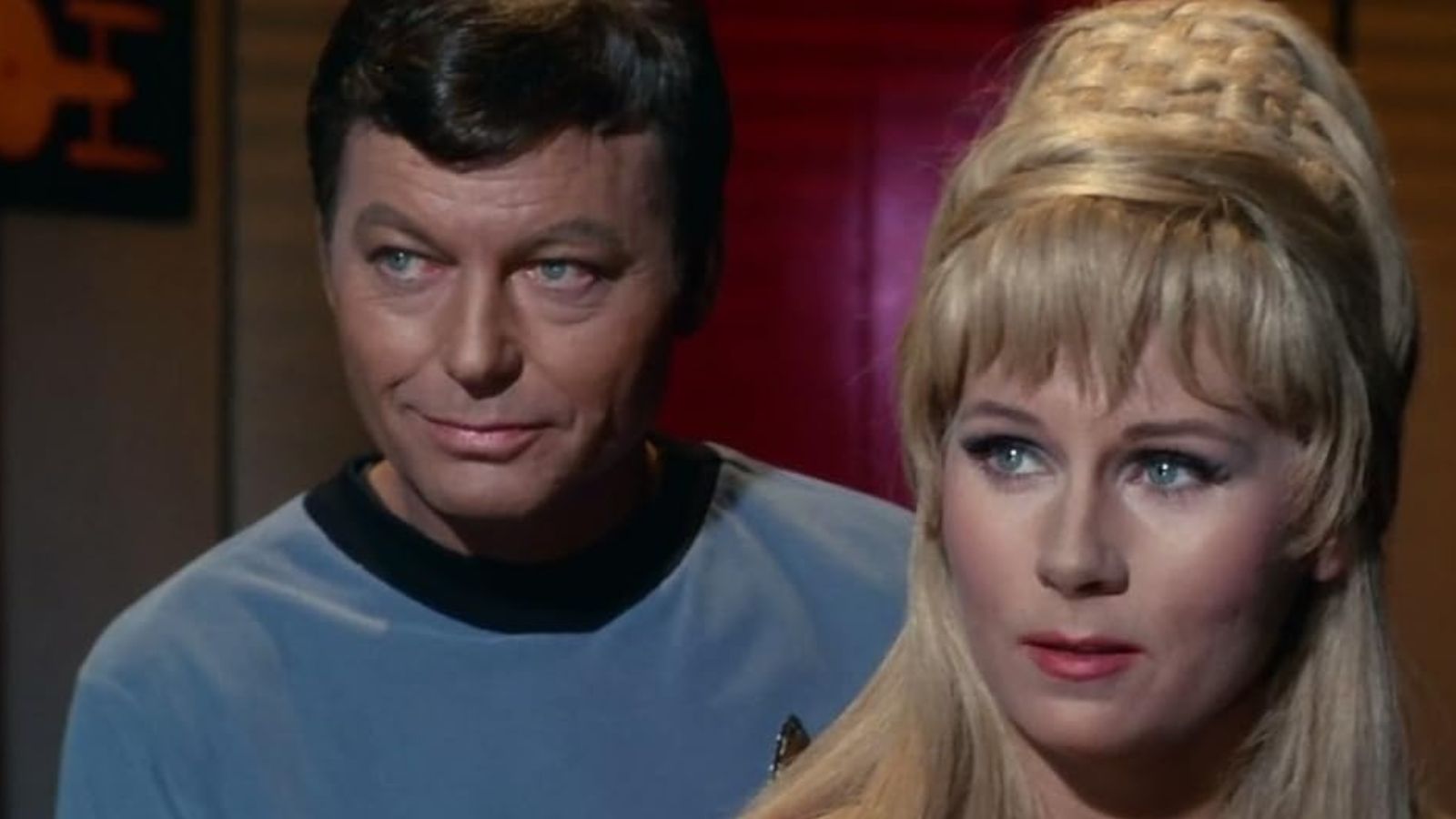
Star Trek Reused the Same Sets Often
There were some sexist vibes.
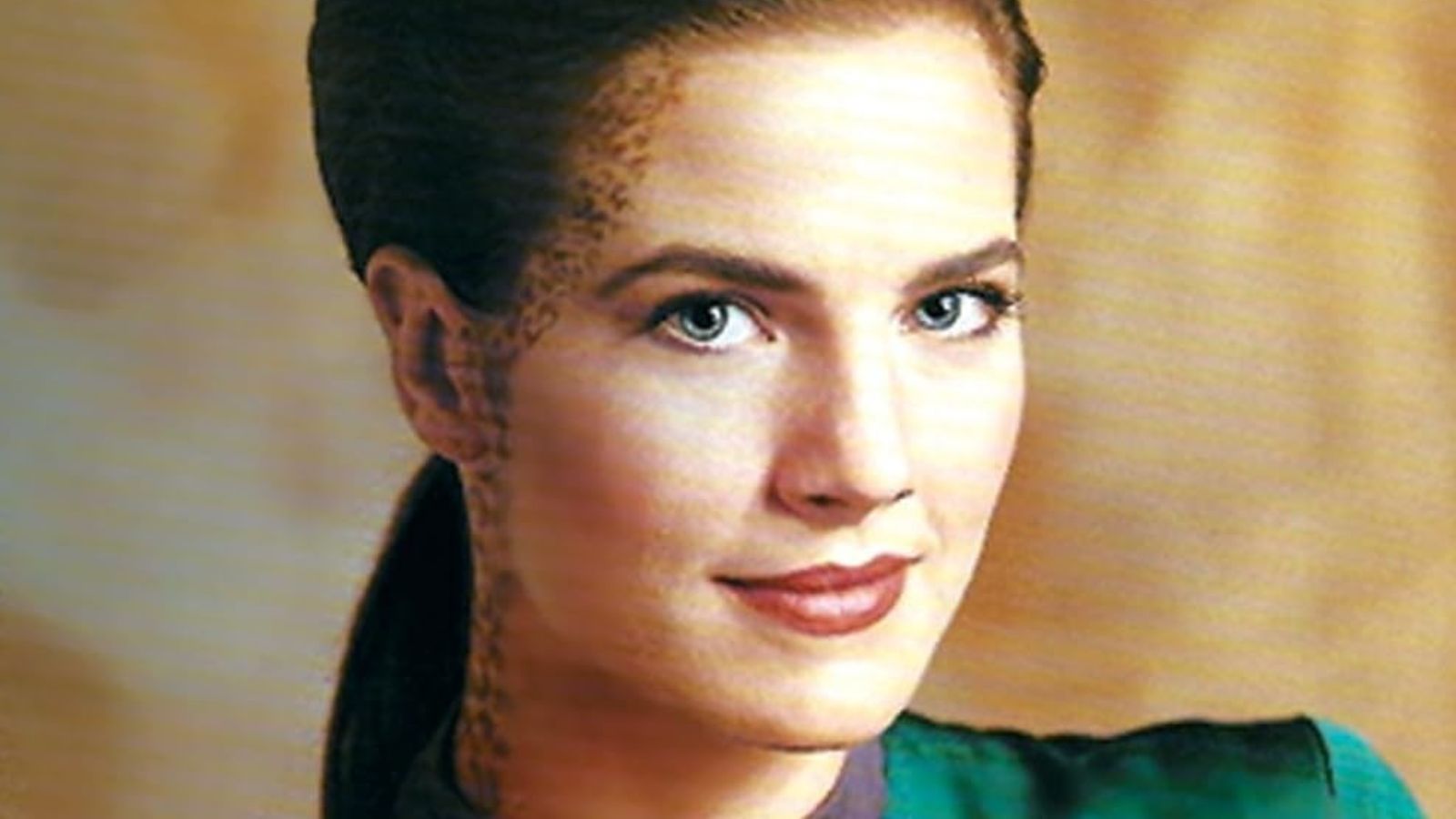
Star Trek Was Forced to Move With the Times
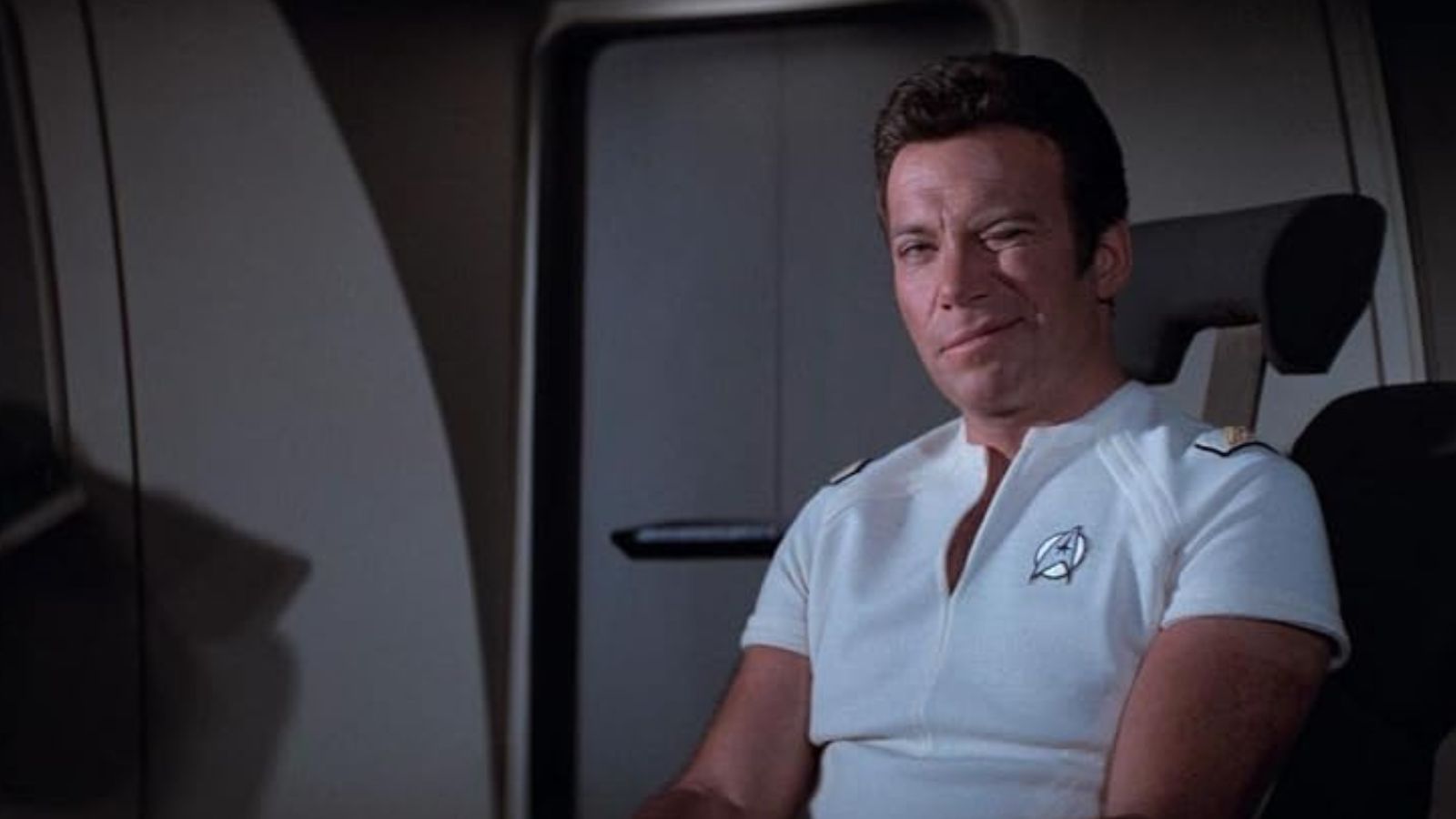
We’ve All Fancied an Alien on Star Trek at Some Point in Our Lives
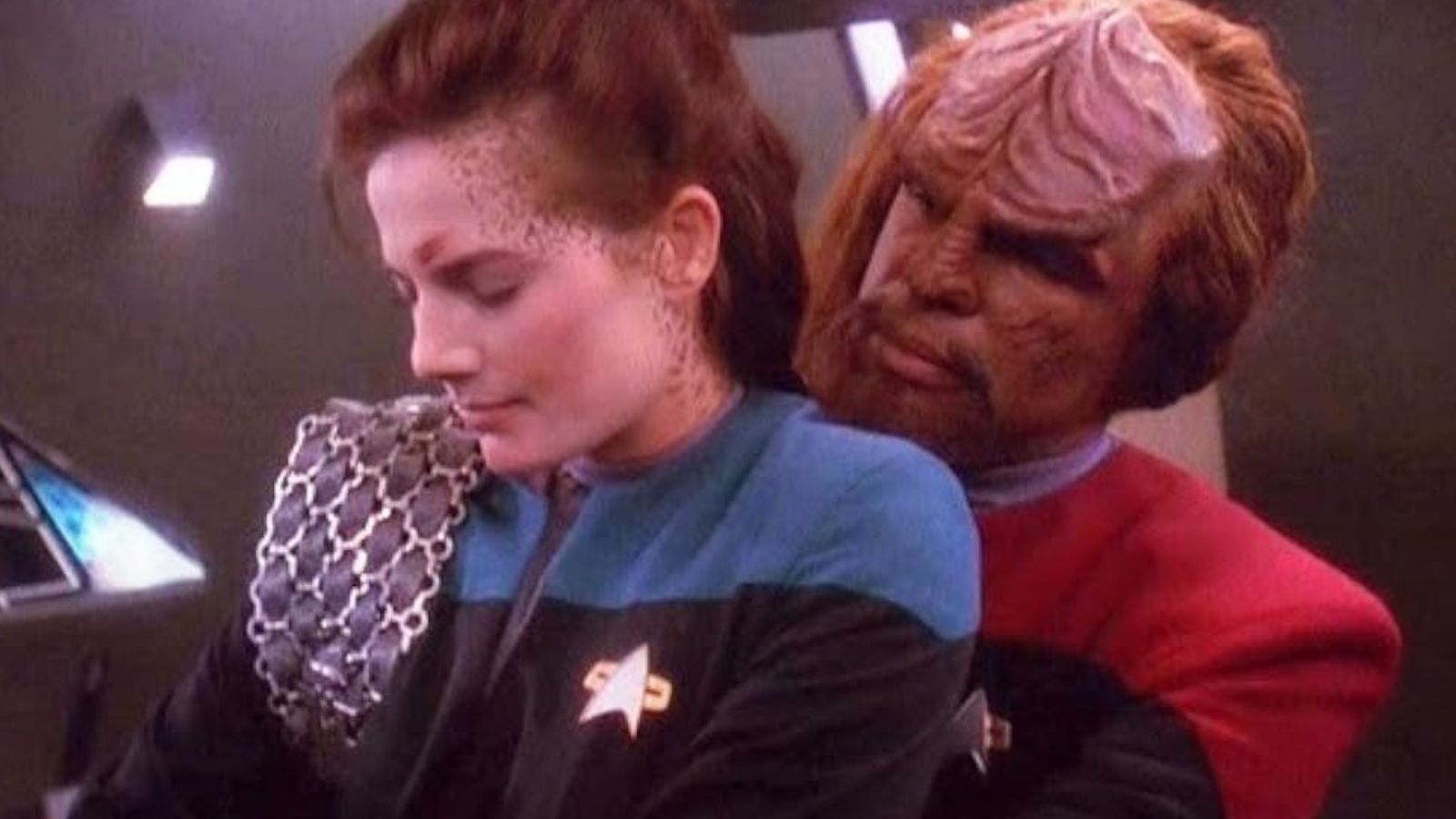
Drama in Deep Space Nine’

Star Trek Voyager Criticized for Having a Female Captain
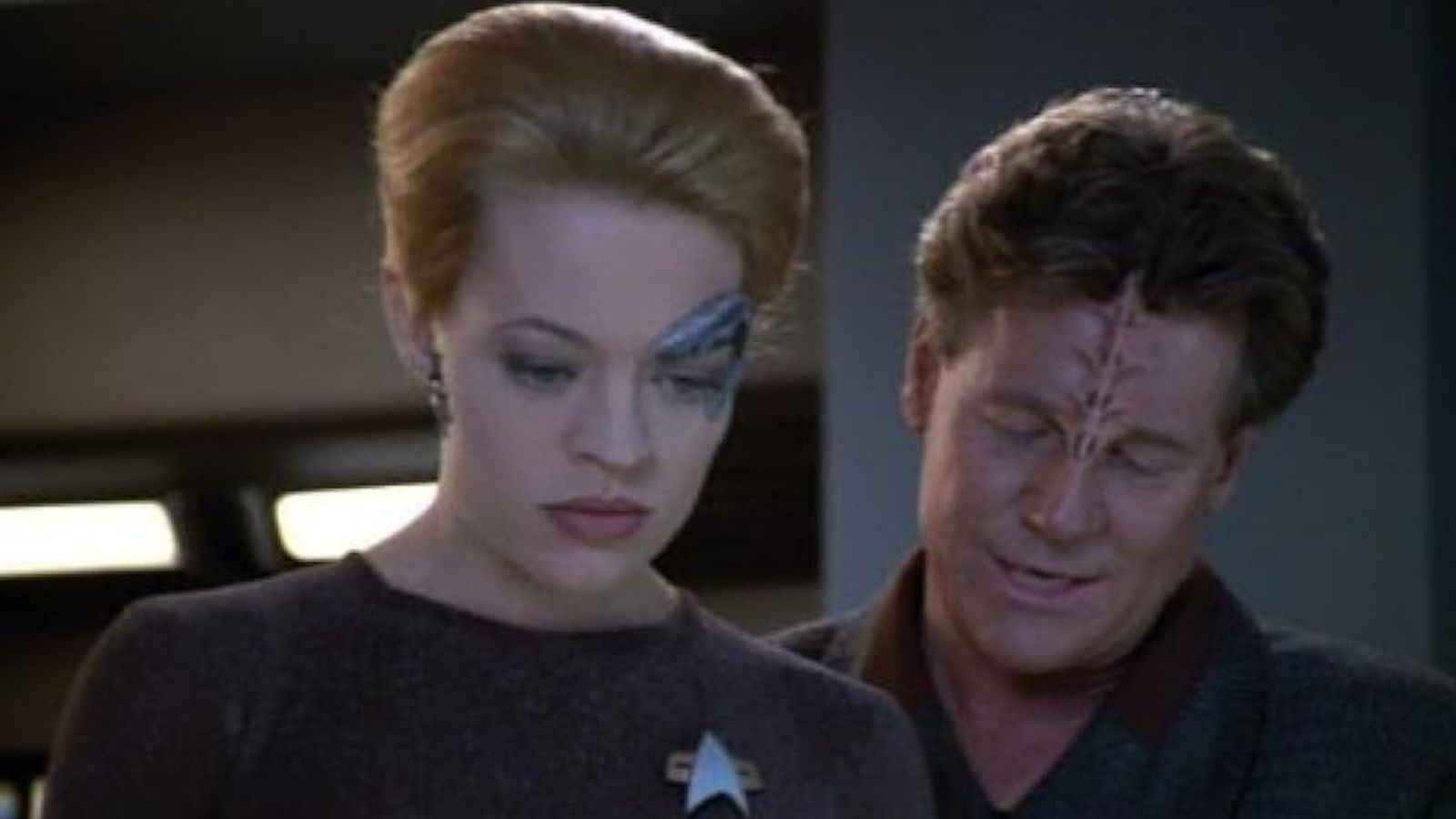
The Story Lines Weren’t Always Great
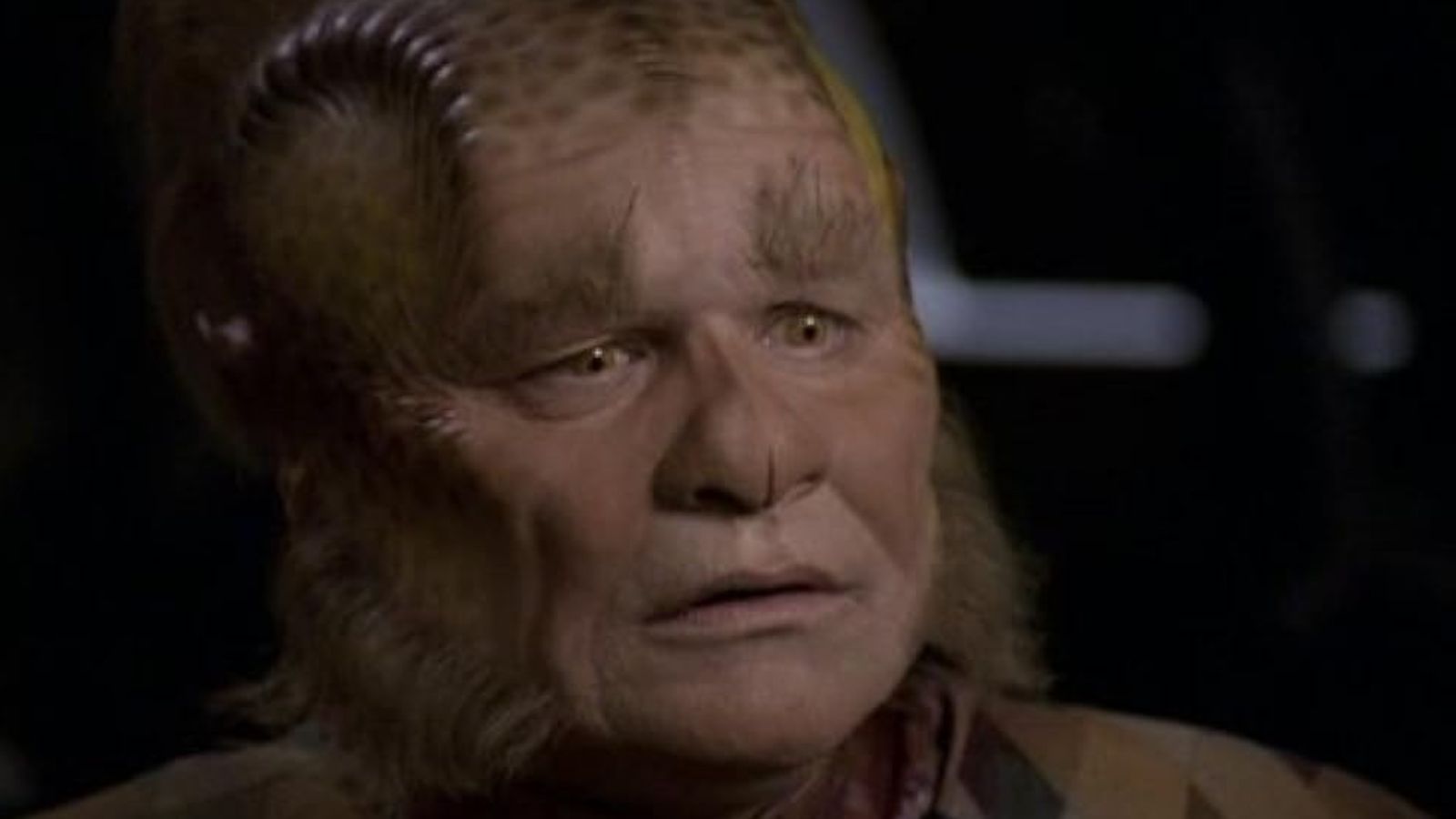
Some of the Costumes Were Not Good
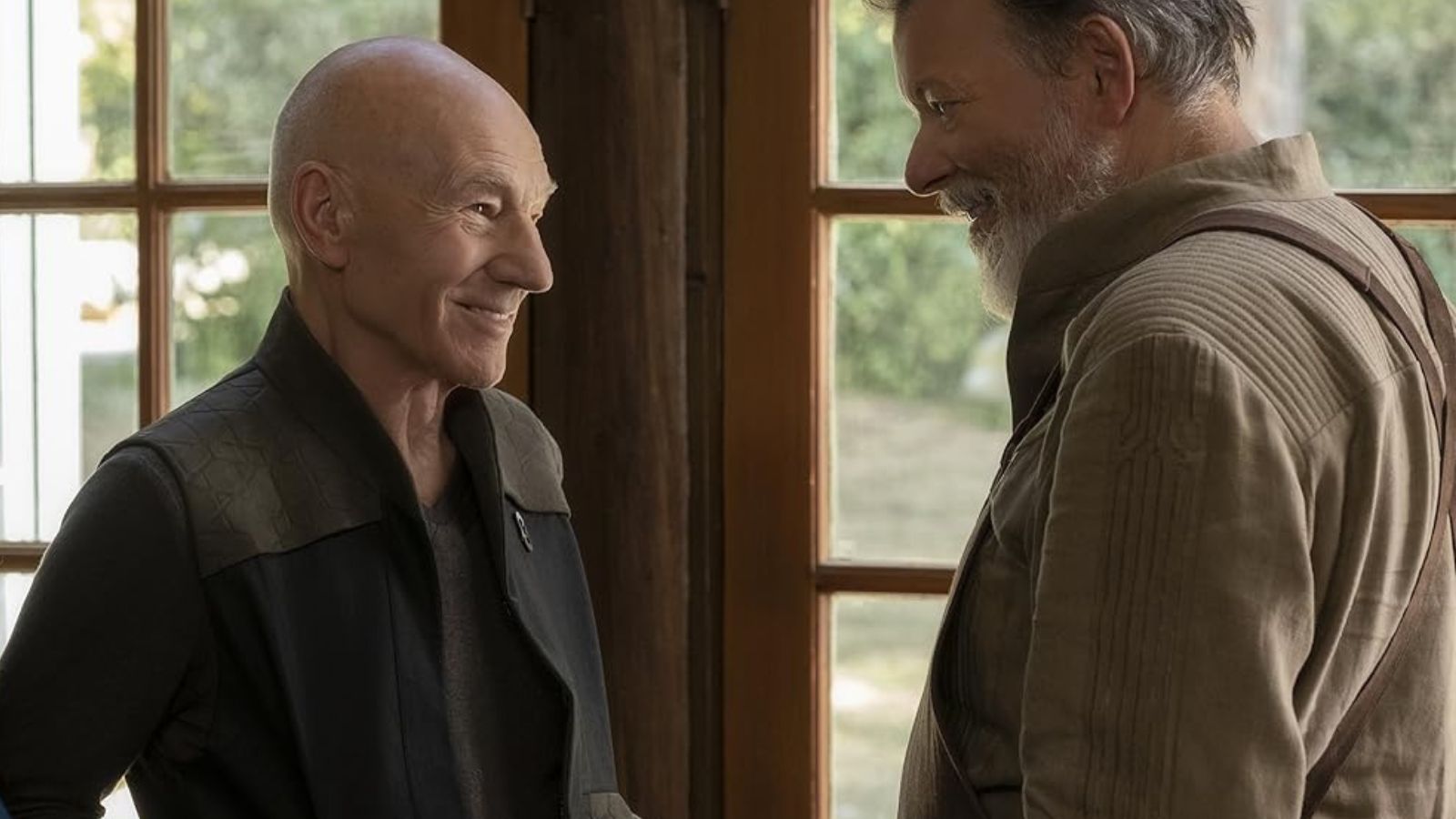
We Want Captain Picard Back
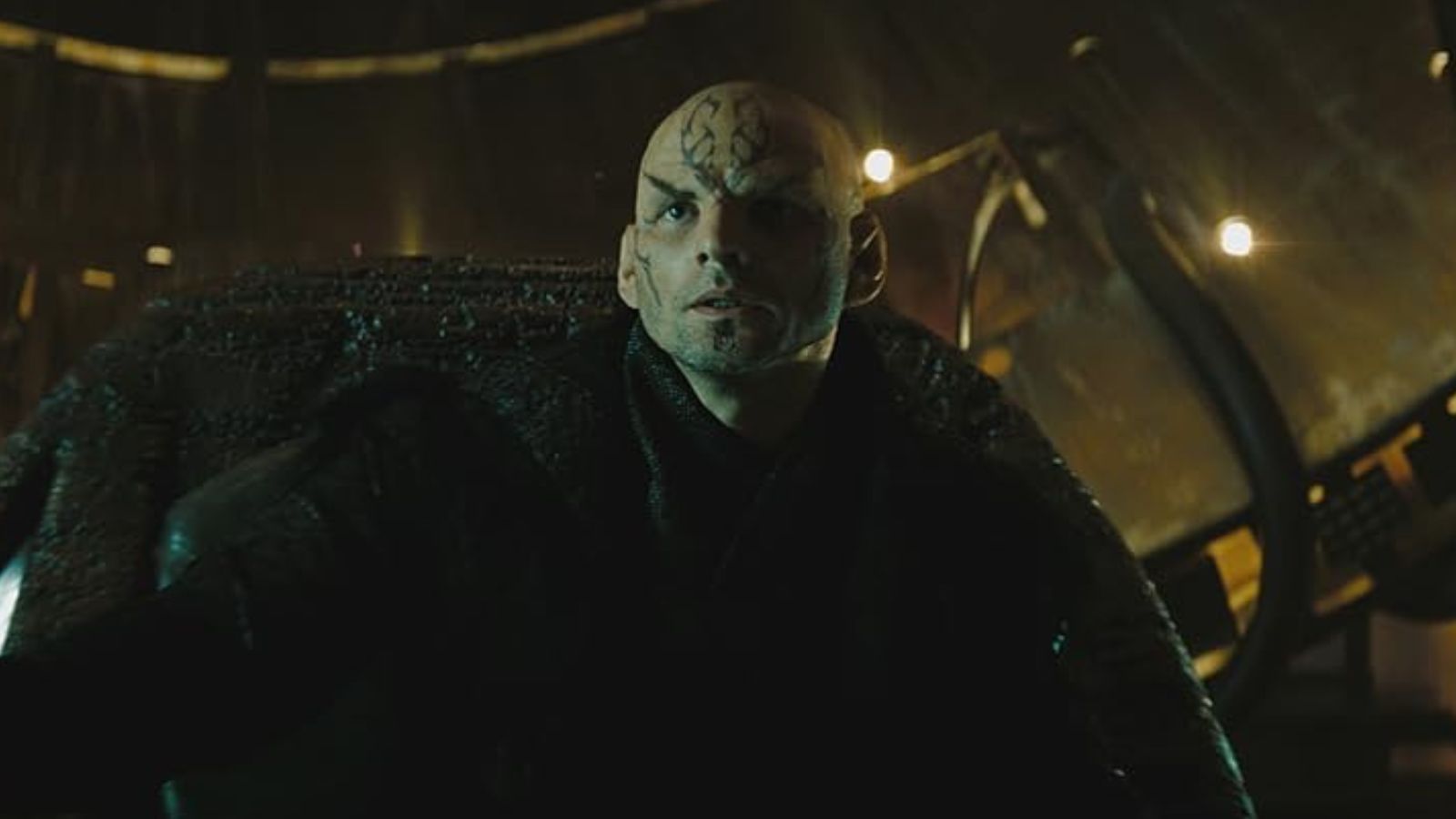
Most Fans Preferred the TV Series to the Movies
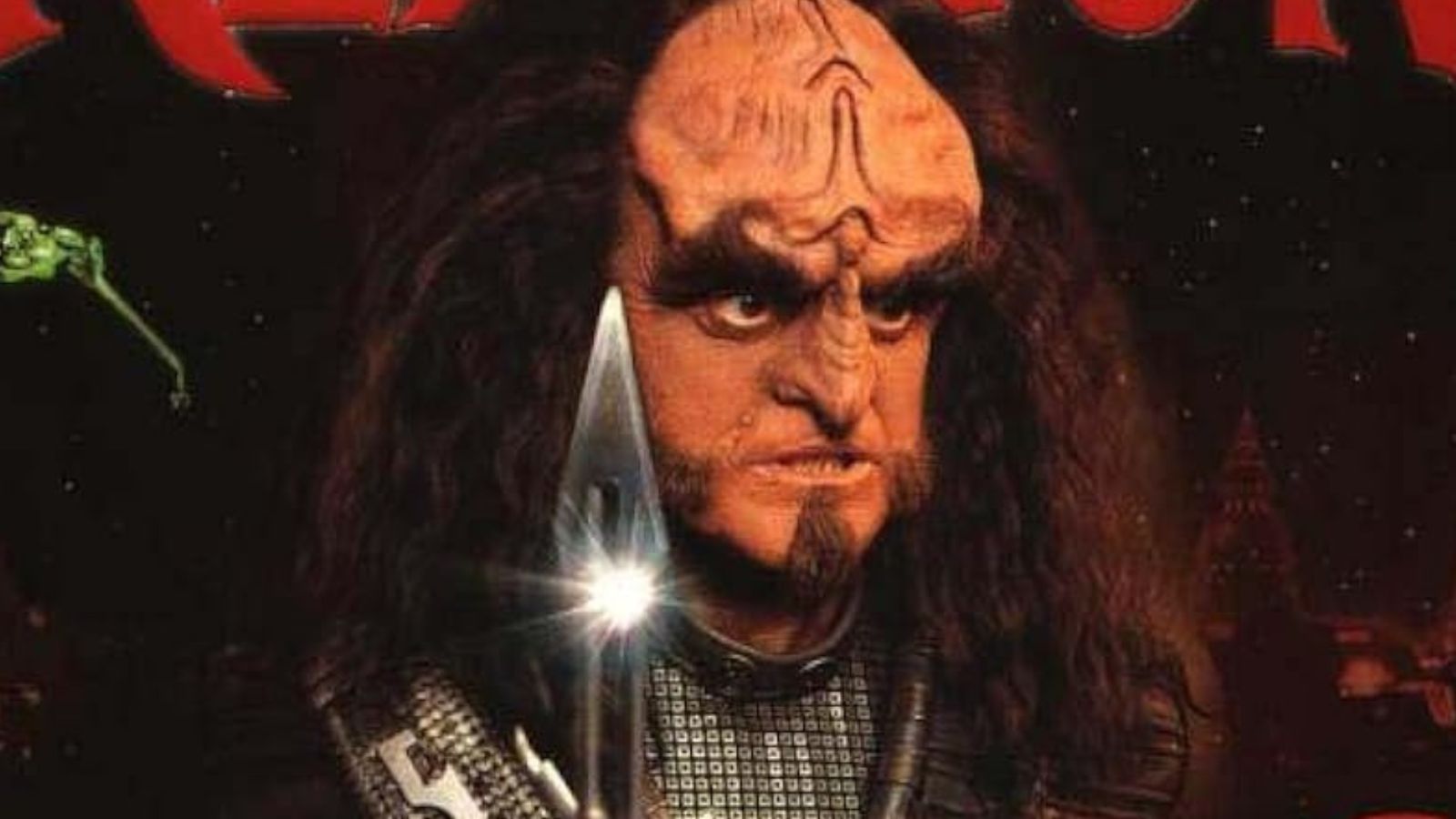
We Have all Tried to Speak Klingon
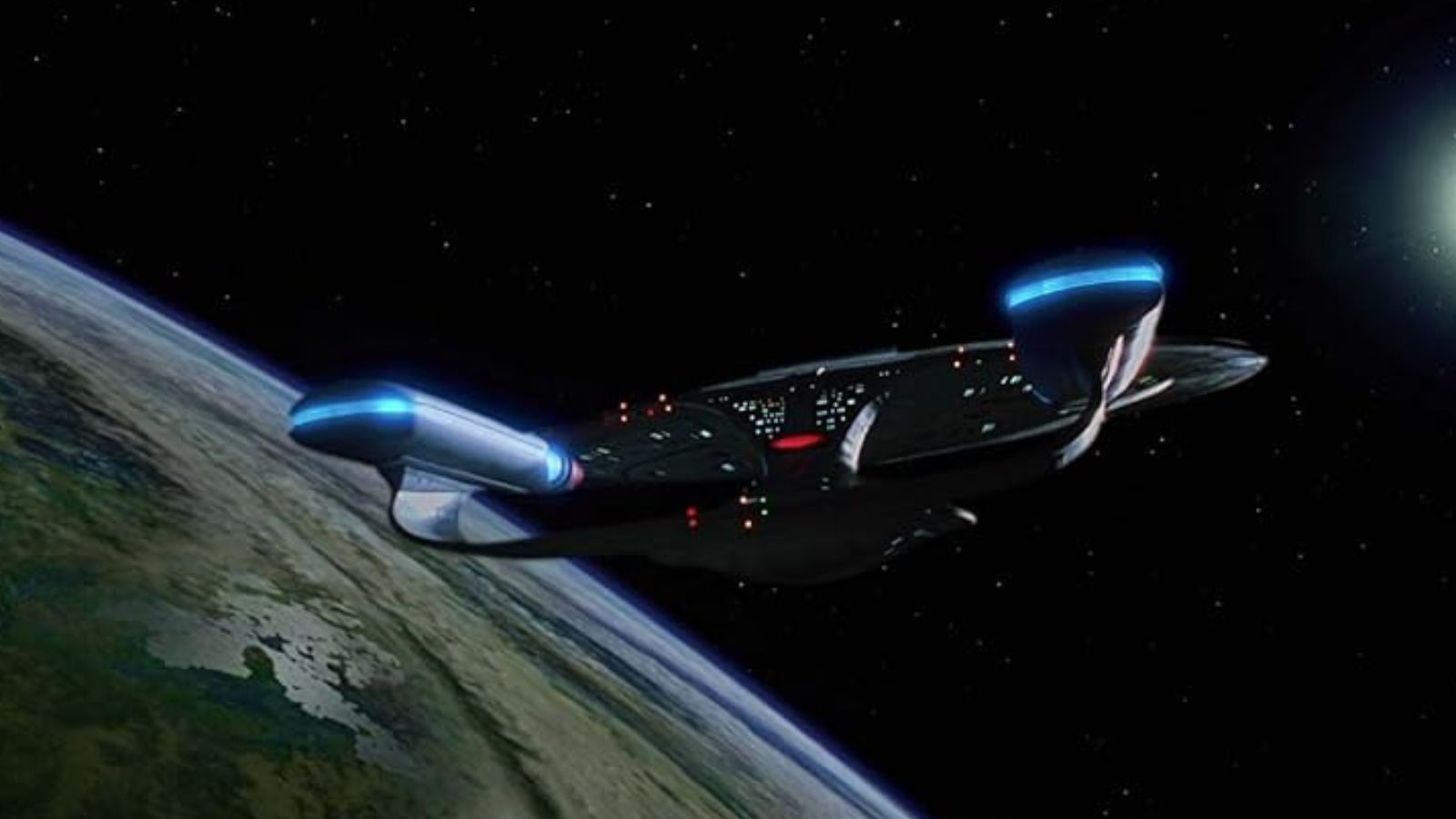
Sometimes, Star Trek Was Scary
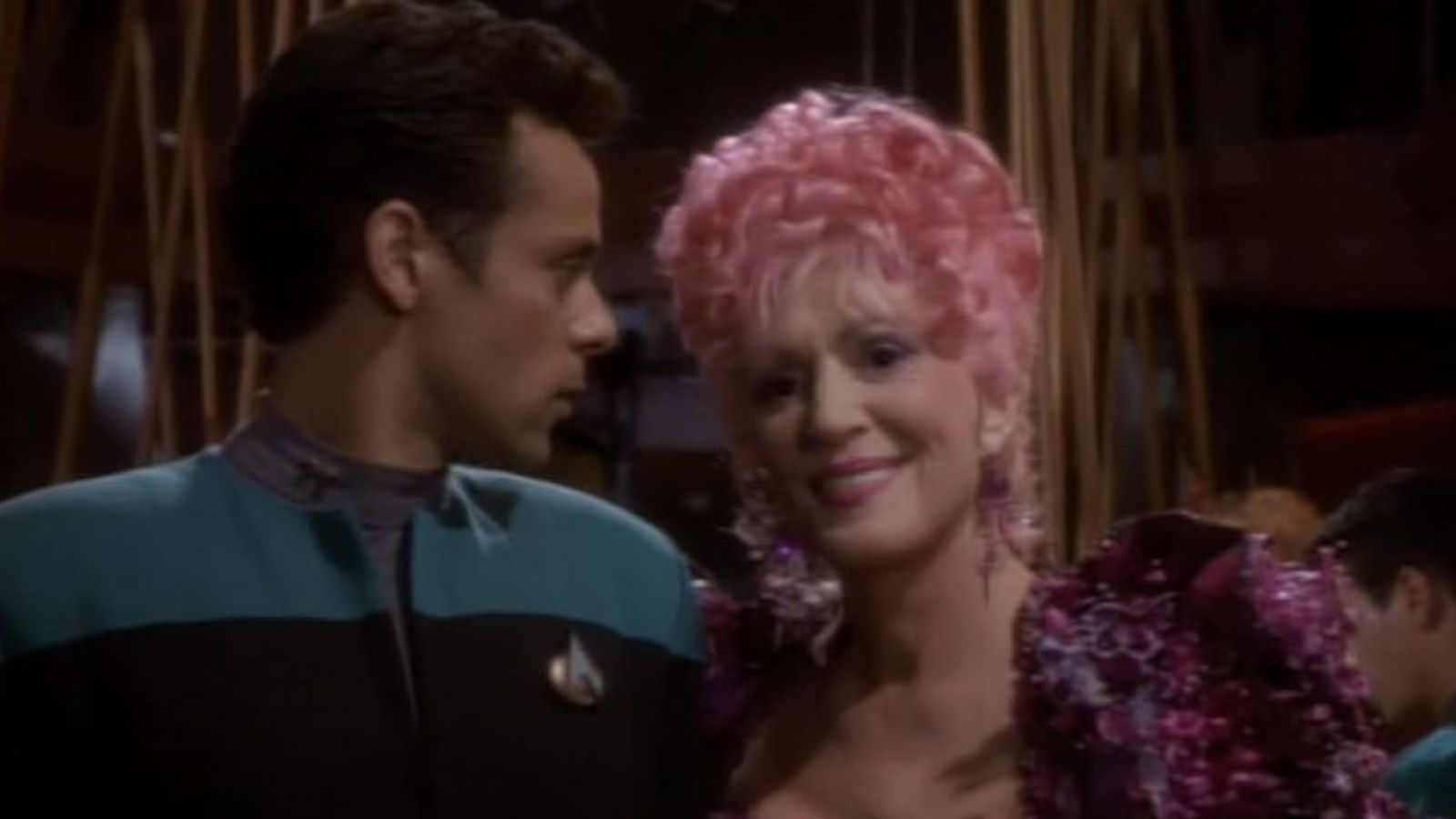
The Theme Tune Was Awesome
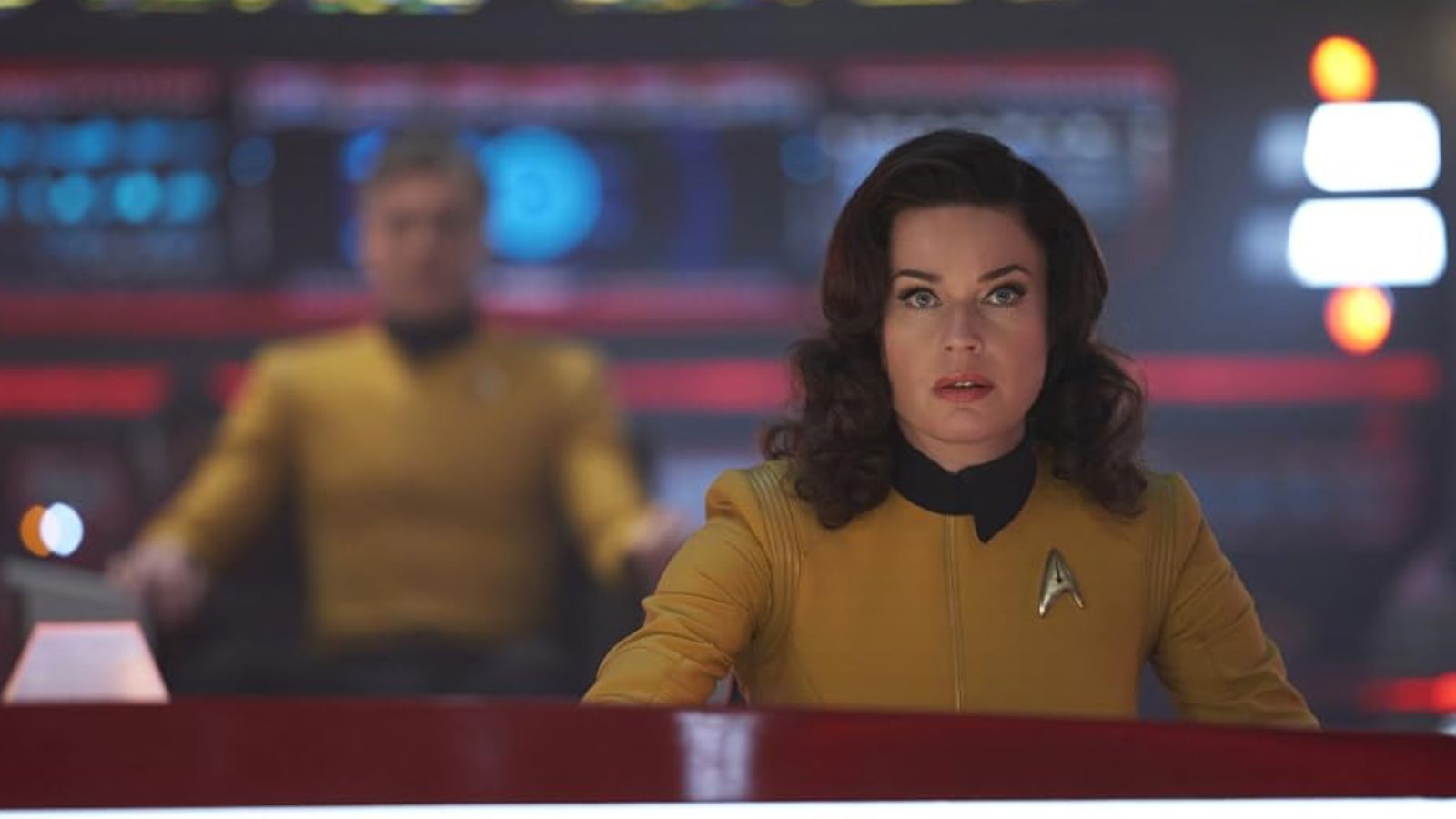
Star Trek’s Original First Officer Was a Woman
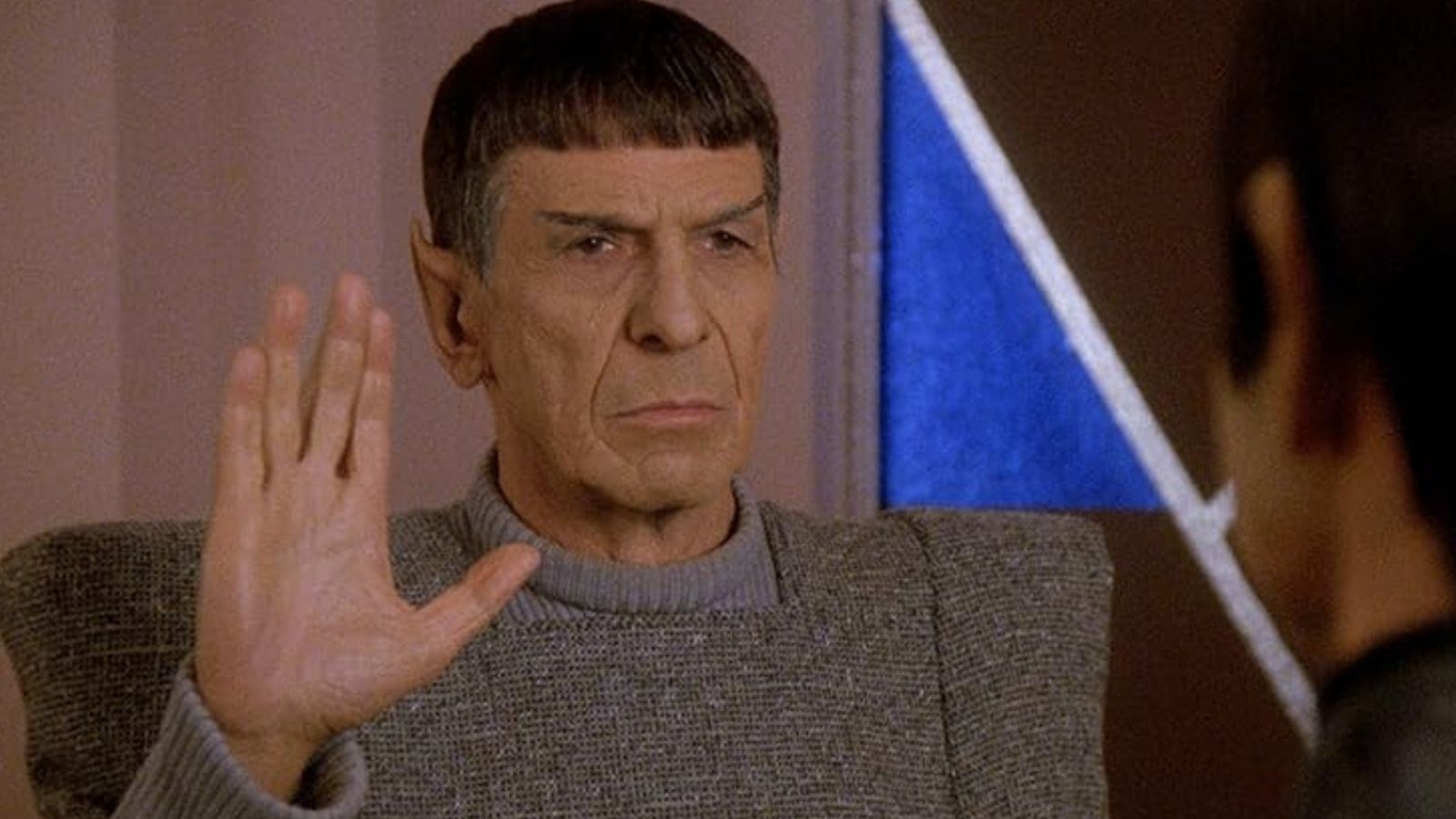
Spock Impressions
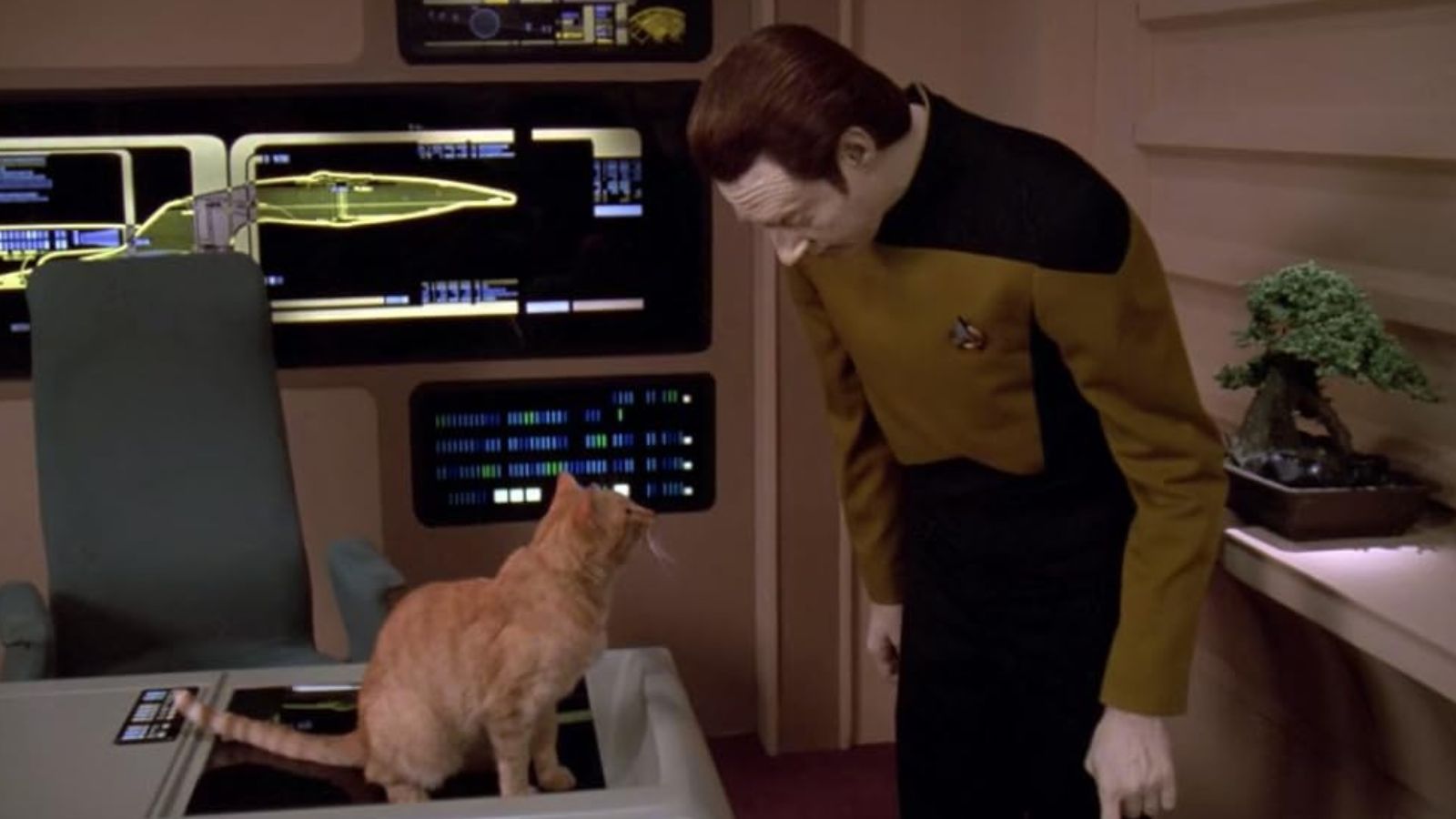
Some of the Tech from the Trek Has Already Become a Reality
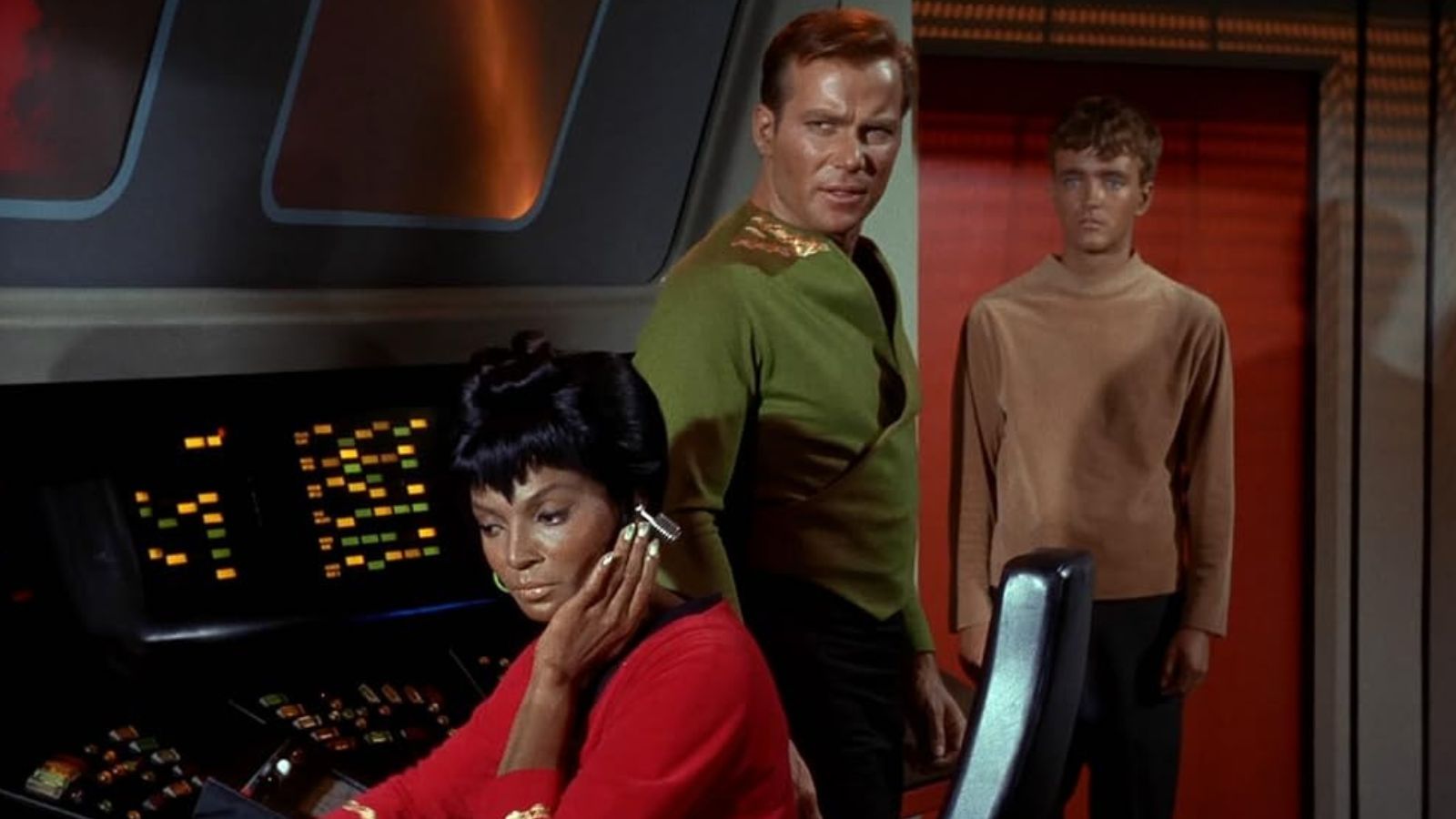
William Shatner and Leonard Nimoy Both Got Tinnitus
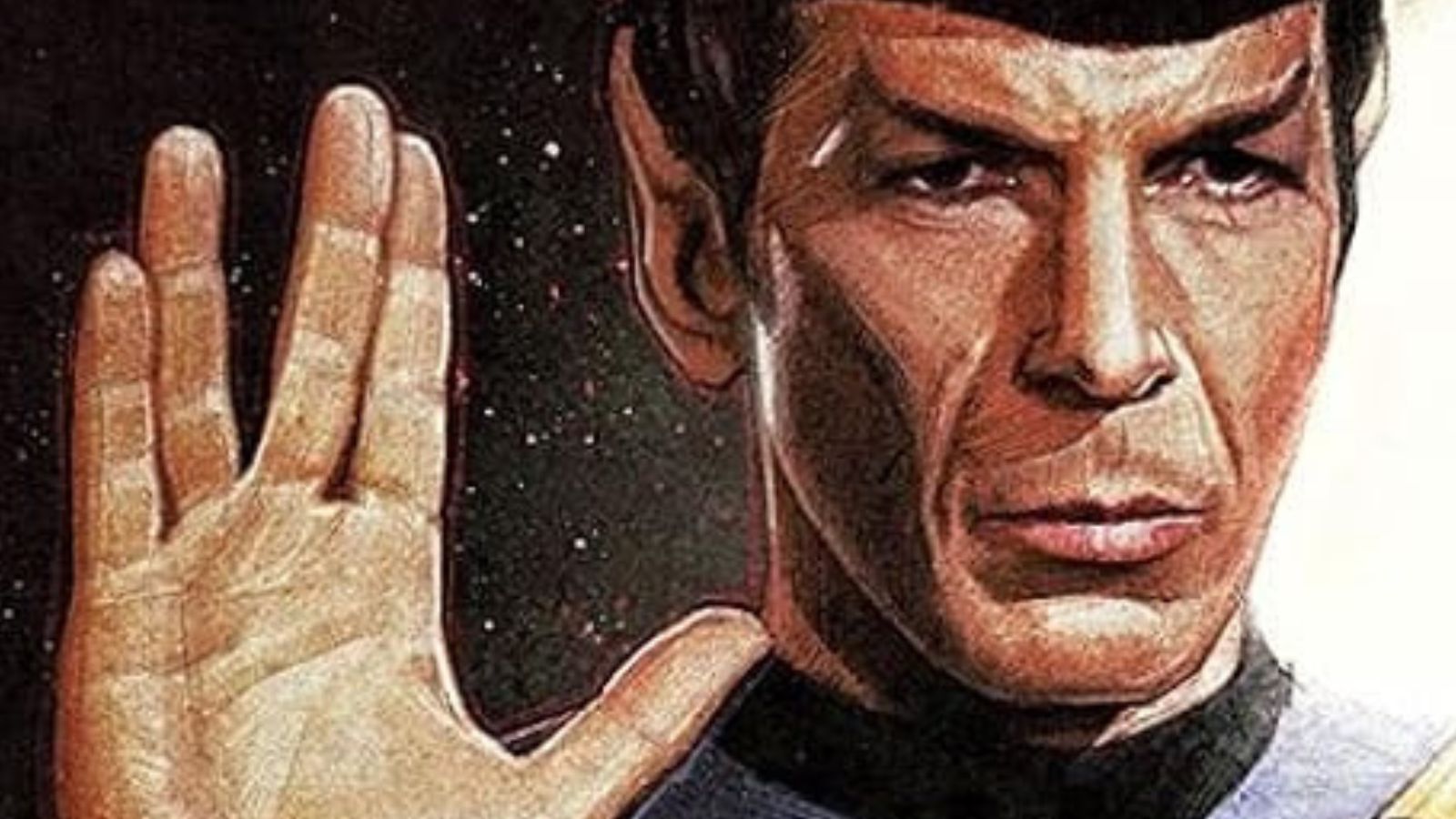
Spock’s Vulcan Salute is a Special Blessing in Hebrew
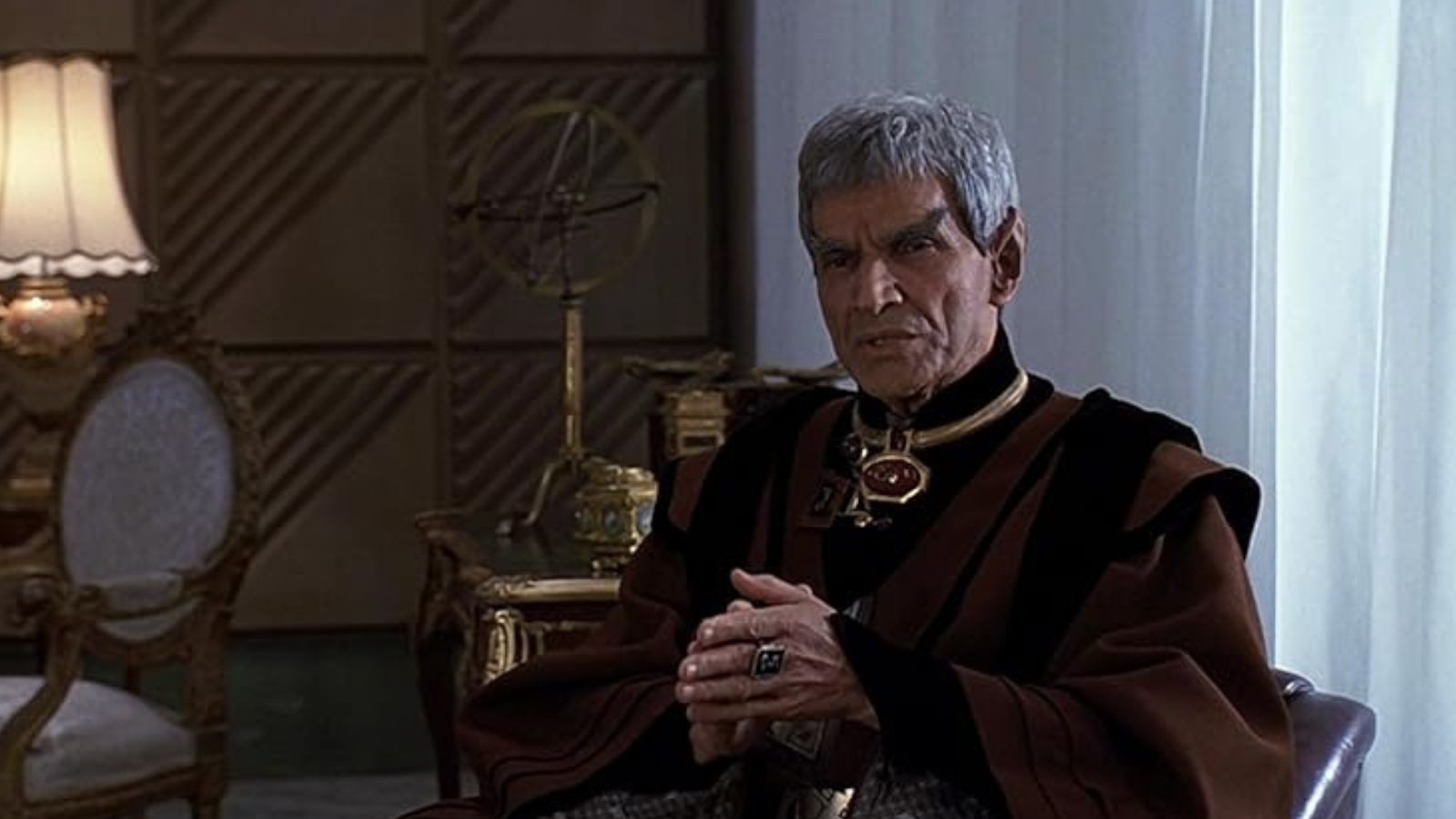
Star Trek Didn’t Only Recycle its Sets; It Also Recycled Actors
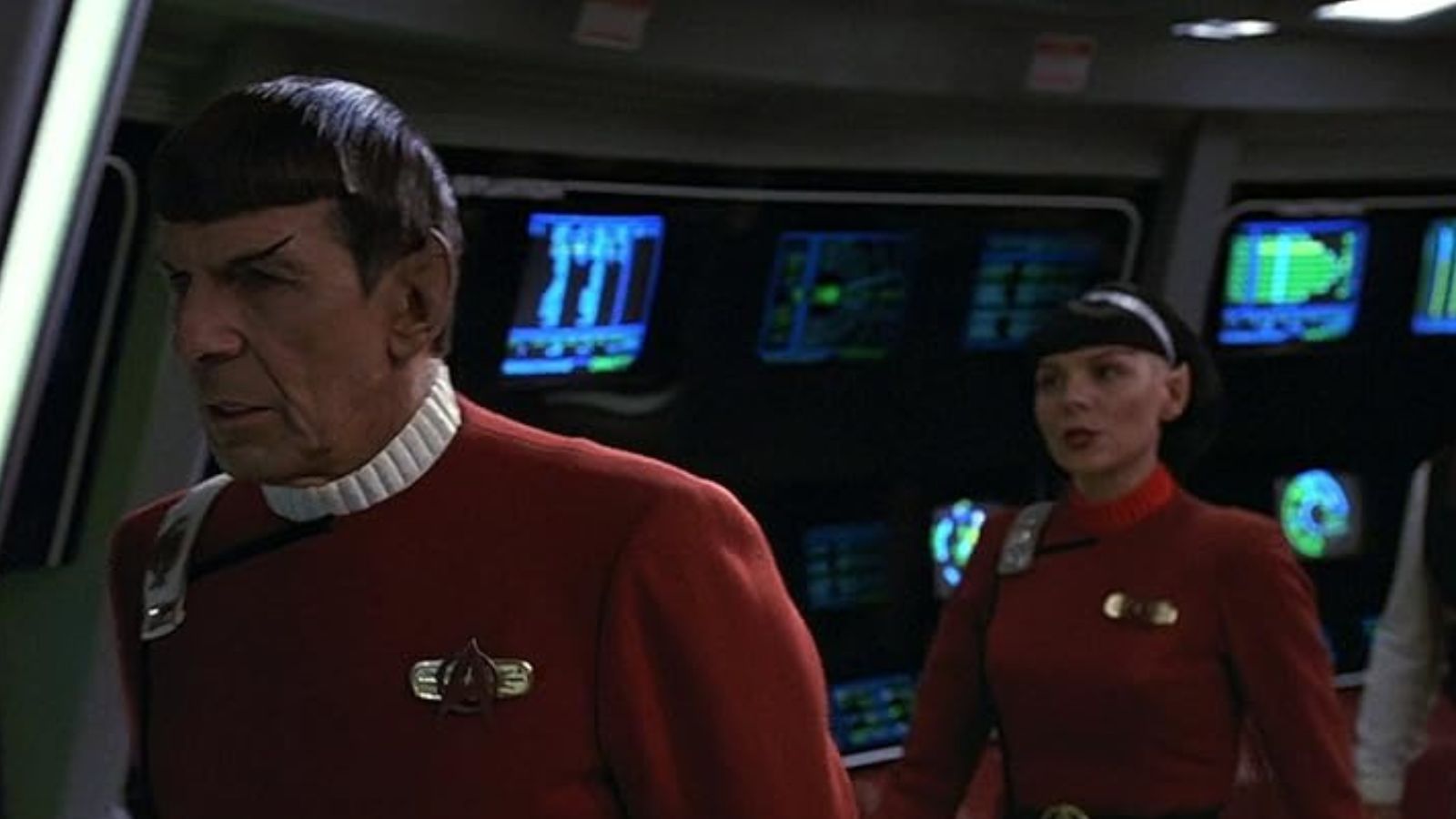
The Star Trek Brand Has Become Over-Commercialized

18 Formerly Beloved TV Shows That Would Flunk the Political Correctness Test Today

18 Films That Went Too Woke in the Last Decade

Empty Screens: 18 Movies Where Almost Nothing Really Happens
More for You
Supreme Court's Donald Trump Move Leaves Legal Expert 'Deeply Concerned'
Megan Fox Signs With UTA
Here's No. 1 thing mentally strong couples 'never' do, says relationship therapist of 20 years
28 celebrities you probably did not know are nonbinary
Scientists have discovered the maximum age a human can live to
Netflix’s new movie trailer slammed as ‘AI propaganda’
Young Sheldon star criticises decision to end series: ‘Such a stupid business move’
Major Steakhouse Chain Closes 41 Locations
11 Facts You Should Know About Hard-Boiled Eggs
Should you buy bonds now? Here's what Vanguard thinks
The most expensive state to live in isn't California or New York, based on data. Here are the top 10.
Remove A Tree Stump With One Common Household Ingredient
'We were sold this unachievable dream': Georgia woman explains the 'broken' system that has young Americans fearing for their futures. Is this narrative right?
'Pricey toy': Air Force reveals details of Russian Su-57
Strange 'Ring' of Water in Michigan Seen From Space
Culver's Vs Five Guys: Which Burger Chain Is Better?
Biden bungles date of Jan 6 Capitol riot in latest gaffe
CORVETTE C8 6.2 V8 SOUNDS GREAT on GERMAN AUTOBAHN
Genshin Impact: Praetorian Golem Locations
Common Foods That Are Illegal to Grow in Your Backyard

IMAGES
VIDEO
COMMENTS
Background information []. Robert Lewin, who co-wrote "11001001" with Maurice Hurley, devised the concept of the Bynars while contemplating binary numbers in computers, thinking, "Maybe there are individuals who are binary, composed of binary cells and work as a pair." He later recalled, "Their strange way of finishing each other's thoughts, their whole unique attitude, the planet they came ...
11001001: Directed by Paul Lynch. With Patrick Stewart, Jonathan Frakes, LeVar Burton, Denise Crosby. The Enterprise docks at a starbase for repairs where it is commandeered by a race of technologically-linked aliens intent on using the vessel for their own purposes.
"11001001" is the fifteenth episode of the first season of the American science fiction television series Star Trek: The Next Generation. It was first broadcast on February 1, 1988, in the United States in broadcast syndication.It was written by Maurice Hurley and Robert Lewin, and directed by Paul Lynch.. Set in the 24th century, the series follows the adventures of the Starfleet crew of the ...
This episode won an Emmy Award in 1988 in the category Outstanding Sound Editing for a Series, namely Bill Wistrom, Wilson Dyer, Mace Matiosian, James Wolvington, Gerry Sackman, and Keith Bilderbeck. TV Guide ranked this as the sixth best Star Trek episode for their celebration of the franchise's 30th anniversary.
In its almost 60-year history, Star Trek has introduced many different kinds of alien species, including some, like the Bynars, who have only appeared a handful of times. Introduced in Star Trek: The Next Generation season 1, episode 15, "11001001," the Bynars are a fascinating species that the franchise has barely referenced since their initial appearance.
The Bynar in Star Trek: Lower Decks. Those synaptic processors help connect these exotic aliens to their planet's master computer. As we learn in the Star Trek: The Next Generation episode "11001001," Bynars' relationship with that computer is so intimate that it leads the aliens to communicate using binary code. Furthermore, the binary ...
The Bynars ultimately turned out to be a one-off alien race; they never showed up again on "TNG" and "11001001" (aired in 1987) was their last appearance before "A Few Badgeys More." However ...
Eugene Myers. - March 1, 2012 8:00 am Posted in: TNG Re-Watch. "11001001". Written by Maurice Hurley and Robert Lewin. Directed by Paul Lynch. Season 1, Episode 15. Original air date: February 1, 1988. Star date: 41365.9. Mission summary.
Picard and Riker arm themselves and then set the ship on auto-destruct. They have 5 minutes. They notice an enormous amount of data being received and stored on the Enterprise' computer banks. They access the bridge and find 4 Bynars lying unconscious & dying. Picard and Riker cancel the auto-destruct as they reach the Bynaus planet.
Two humans are needed to operate the system to reboot the Bynar planet, yet they only kidnap one, Riker, and Picard only ends up on board by accident. Distracted by the Sexy: Minuet is made to distract Riker, and later Picard, from realizing the Bynars' plans. The Dividual: Bynars are like this by nature. Dull Surprise:
This are two scenes of the Season 1 TNG episode "11001001". A race called Bynars retrofit the Enterprise, but are stealing it then for a certain purpose.I li...
Bynaus was an inhabited planet in the Beta Magellan system and the homeworld of the humanoid Bynars. This species was interconnected with the master computer on their planet which created a dependency on the computer for their life functions. In 2364, the planetary computer on Bynaus was shut down to protect it from the electromagnetic pulse generated by a star in the Beta Magellan system when ...
In-depth critical reviews of Star Trek and some other sci-fi series. Includes all episodes of Star Trek: The Original Series, The Animated Series, The Next Generation, Deep Space Nine, Voyager, Enterprise, Discovery, Picard, Lower Decks, Prodigy, and Strange New Worlds. ... The Binars are not too bad actually but there is a hideously smug bout ...
A friendly reminder regarding spoilers!At present the expanded Trek universe is in a period of major upheaval with the continuations of Discovery and Prodigy, the advent of new eras in gaming with the Star Trek Adventures RPG, Star Trek: Infinite and Star Trek Online, as well as other post-57th Anniversary publications such as the ongoing IDW Star Trek comic and spin-off Star Trek: Defiant.
This review contains spoilers. 1.15 11001001. The Enterprise D docks at Starbase 84 to have its Holodeck repaired after it nearly killed one of their crew members a few episodes ago. Not a bad ...
"Star Trek: The Next Generation" 11001001 (TV Episode 1988) cast and crew credits, including actors, actresses, directors, writers and more. Menu. Movies. Release Calendar Top 250 Movies Most Popular Movies Browse Movies by Genre Top Box Office Showtimes & Tickets Movie News India Movie Spotlight.
The Bynars are a humanoid non-player race native to the Beta Magellan System in the Alpha Quadrant. Bynars are shorter in height than most humanoids. They had lilac skin and enlarged skulls. They are genderless and always live and work in pairs. See List of Bynar duty officers Bynar at Memory Alpha, the Star Trek Wiki.
April 19, 2024. Battle at the Binary Stars. The Battle at the Binary Stars begins with a bang. Captain Philippa Georgiou and the crew of the USS Discovery receive an urgent distress call from the nearby binary star system. The system is being devastated by a Klingon fleet commanded by T'Kuvma, a powerful and influential leader who seeks to ...
If there's one thing Star Trek fans are known for, it's the love of the tiny details about the universe of the Federation that helps bring the future to life — and now we've got some more Discovery details that help expand our knowledge of 23rd Century Starfleet. While we've known for some time the official ship class designations of the series' hero starships — the Walker-class ...
11001001 isn't a classic, but it's a solid piece of entertainment, and proof that Angel One isn't representative of the show at this stage in its development. Read our reviews of the first season of Star Trek: The Next Generation: Encounter at Farpoint. Supplemental: The Lost Era - The Buried Age by Christopher L. Bennett.
Amazon.com: Star Trek - The Next Generation, Episode 16: 11001001 [VHS] : Burton, LeVar, McFadden, Gates, Beaumont, Gabrielle, Becker, Robert, Bole, Cliff, Bond, Timothy, Burton, ... the crew is introduced to the Binars a computer-independent and androgynous alien race who will initiate some necessary repairs to the Enterprise. Most of the crew ...
Star Trek The Next Generation Season 1 Episode 15 11001001
The only requirement for fusing characters is that one be fully fused (3/3 Tuvok + 1/3 Neelix, 4/4 Bynar A + 1/4 Bynar B). You can do this with both characters at level 1. The reason you generally want to level up and fully equip your fully-fused character is that the new card you get will be equipped up to the level you equipped the higher ...
Star Trek: Discovery reveals that the Terran High Chancellor was killed for trying to make reforms, which is presumably a reference to Mirror Spock.In Star Trek: Deep Space Nine season 2, episode 23, "Crossover", it was confirmed that Mirror Spock rose to the role of Commander in Chief, and the peaceful reforms led to the Terran Empire being unprepared for war with the Klingon-Cardassian Alliance.
In 1995, Captain Janeway took over our screens as the first female lead of Star Trek Voyager, boldly going where no man (or woman) had gone before.There was a massive backlash from fans and the ...
Feb 8, 2024 - This Pin was discovered by Halo🚬🧁. Discover (and save!) your own Pins on Pinterest